The city of Ubud
Ubud has grown tremendously in the previous year. You even got a Starbucks now and I bet McDonald’s will follow soon. The main roads of Ubud are congested half of the time and the city center looks more like a giant mall these days.
Yet, Ubud is perfectly located right in the middle of Bali. You could use it as base to explore almost the entire island. The city center is a place you may want to avoid but it’s still easy to find some peace by staying a bit further off it. You have great accomodations with view over the ricefields or the river, swimming pool for a very reasonable price.
The same goes for restaurant. If you are craving for some Italian, Mexican or French food after months of rice, you’ll find everything you’re looking for. If you just want to eat simple local food at the normal price, you will need to get off the center.
Walking around Ubud
There is 2 main walking path in West Ubud. The first one goes mostly through rice fields. To find the starting point, take Jl Raya Ubud from the city center to the West. Just after you pass the last shop and before the road goes down through a shaded area between high walls you have a street going up on your right (their is many signs indicating homestays, the one on top is Nirwa Homestay if I’m not mistaken).
Follow this road for 2 minutes and you will be in rice fields.
The second one is called the Campuan Ridge Walk. This is a nice stroll on the edge of a hill surrounded by alang-alang field (the grass which is dried and then used to make roof). After about 20min, the path turns into a road and you have accommodations and cafes.
The starting point of Campuan Ridge Walk is also from Jl Raya Ubud. After the down slope, right before the Mini Mart you have an access next to a sign for Warwick Iba Luxury villa. Down there there is a parking lot, right after you have Pura Gunung Lebah which is closed to public most of the time. The path starts on the right of the temple.
I really like this view of Pura Gunung Lebah from the bridge over the river. Too bad they couldn’t manage to hide the power line.
Pura Taman Saraswati
A beautiful place located right behind the Starbucks on the main road and opposite to Ubud Palace on Jl Suweta.
The actual temple compound is not always open to public. If so, the entrance is free provided that you come with a sarong. Otherwise a donation is expected in exchange of the sarong.
Monkey forest
The Monkey forest is, in my opinion, something to skip, unless it’s your first time in Asia and you have never seen common macaque. But you will see plenty of those monkeys on the side the road while driving (especialy in Bali’s mountain areas).
The macaque from the monkey forest are obese but quite tame, so people like it because they can take a selfie with a monkey. On top of that, the price of the entrance ticket has increased repeatedly in the previous years. Your call.
South of Ubud
Tegenungan waterfall
A really nice waterfall with a spectacular setting. In the recent years, lots of tourist stalls have been built on the way leading to the waterfall. There is another access from behind. Get there as early as possible.
There is a 10,000Rp entry fee for everyone and another 10,000 if you want to access the upper level.
Pura Batuan
I highly recommend it if you like Balinese stone-carving. It is on the program of large group tours (many buses on the parking), so go early.
A free donation is asked in exchange of the rent of a sarung.
Setia Darma House of Masks and Puppets
This is simply the best place I’ve visited in Indonesia if you are into traditional masks. They have a very extensive collection of Balinese and Javanese masks, provided with lengthy explanations.
There is also a smaller collection of masks from other parts of Indonesia (mostly Lombok, Papua and Kalimantan).
The place is funded by a wealthy owner, you are simply asked to sign the guestbook at the end (but donations are accepted).
East of Ubud
Pura Kehen
It’s one of my favorite Balinese temples. Entrance is 30’000Rp (which is a bit high for a not so visited temples, 20’000Rp seem more appropriate).
Kanto Lampo and Tukad Cepung waterfalls
Tukap Cepung costs 10’000Rp. It’s very popular on Instagram but quite disappointing in real life. The main draw here is the configuration of the place which allow a beam of light to fall right on the person standing in the middle of the cave. Can be avoided.
Not far away you have Kanto Lampo Waterfall which is also popular but I’ve never visited.
Goa Gajah and Yeh Pulu
Those two sites are located not far from each others and have a quite similar profile. They are small but you can watch there interesting carving.
Yeh Pulu is a natural stone wall which have been carved in the 14th or 15th century. The entrance is 15’000Rp.
Goa Gajah is a place of worship with some purification pools as well as a small cave which entrance is carved in a spectacular manner. The entrance is 15’000Rp plus parking.
North of Ubud
Tegalalang rice fields
They are by far the most famous ricefields of Bali, due to their proximity with Ubud. The configuration of the place makes it great for photography. They are nonetheless victim of their own success and feel more like an attraction park today. Swings and selfie platforms have been built all along the road.
In my opinion they are the most picturesque ricefields of Bali but you might be annoyed by the crowd and the huge tourist industry around it. Some calmer alternatives exist, in North and East Bali for instance.
To get in you pay a 10’000Rp entrance fee (plus a small parking fee). If you want to get up the top of the other side, you will have to give a second donation. 5’000Rp is acceptable.
Tirta Empul
Tirta Empul are sacred springs located near Tegallalang. Water purification (melukat) are a very important element of the Balinese spiritual habits, who consider it necessary to clear themselves from impure thoughts and inner demons. Sacred springs (beji) can be found all over Bali, and many villages have their own.
Tirta Empul is believed to have medicinal properties and Balinese often fill some jugs of the precious water to bring it home. Balinese believe that the spring has been created by the god Indra who needed to dispell the curse cast on its army by the evil king Mayadanawa.
Be warned that Tirta Empul is a very touristy place, if you want to visit go as early as possible to beat the crowd. If you are lucky enough to visit at a moment with few visitors, you will find a magical athmosphere there, but those moments are getting very rare these days.
Gunung Kawi Temples
There are two distinct places :
- Pura Gunung Kawi Sebatu
- Gunung Kawi Tampaksiring
The first one is kind of monastery enshrined in vegetation. A really peaceful place. You can visit it, but in my opinion the best view is from the road.
Entrance is 15,000Rp per person. But the view from the road is free.
Gunung Kawi Tampaksiring features huge statues carved into the cliff and a few smaller temples in the hills. This is one of the oldest site in Bali. Balinese also come here to purify themselves in the river.
The entrance is 15,000Rp per person (plus a small parking fee, I forgot how much).
Practical tips
Maps
Accomodation
You have hundreds of accomodation available in Ubud. I like to stay on Surgiwa street (Jl. Surgiwa) which is calm.
Transport
As always in Bali it’s best to have your own wheels. Motorbike rental starts at 50’000Rp a day.
To got to Ubud from the airport or the South, there is no public transport. The most convenient options is to book an online taxi through Grab or Go-Jek app. Otherwise you can use either Kura-Kura shuttle (80’000Rp from Kuta), or Perama shuttles (60’000Rp from the airport).
If you want to get to Mengwi bus station to catch a bus to Gilimanuk, it’s best to order an ojek / taxi from online app (Grab or Go-Jek).

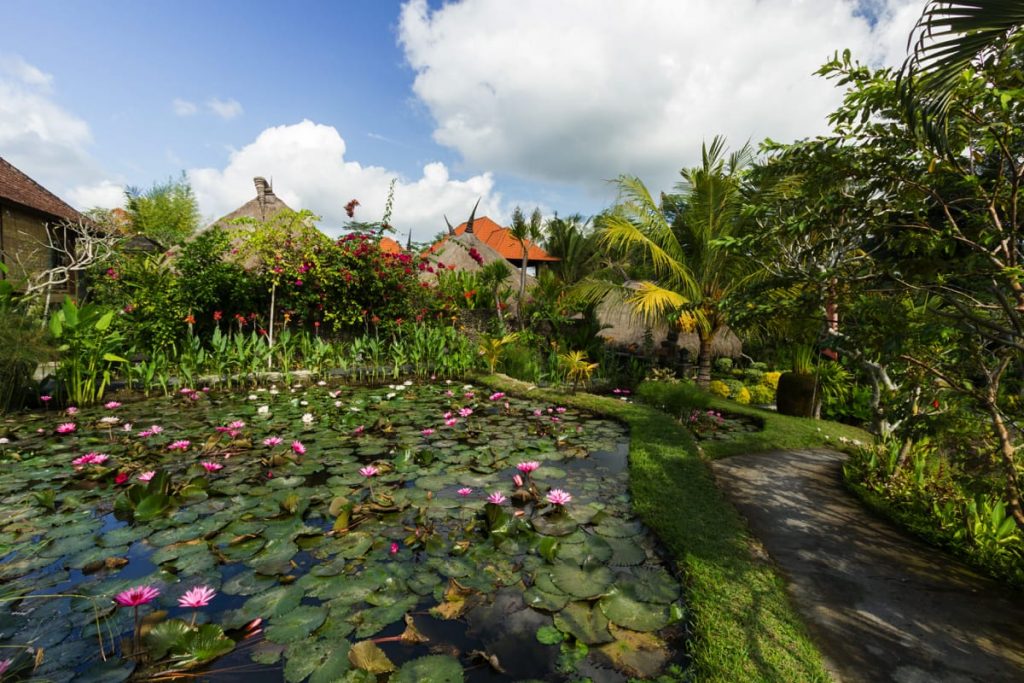

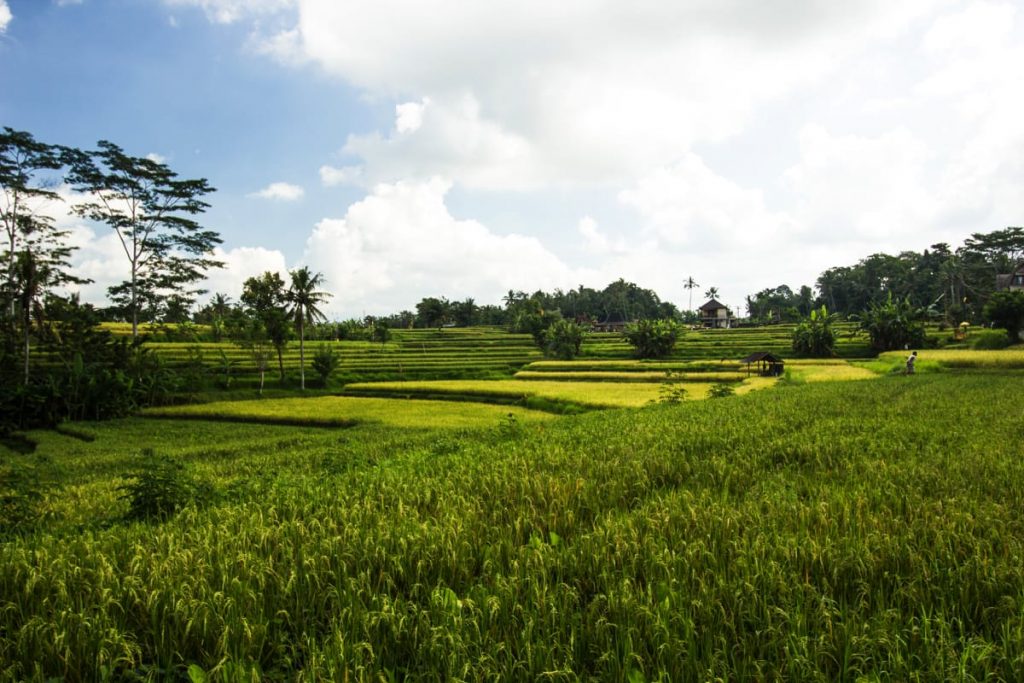
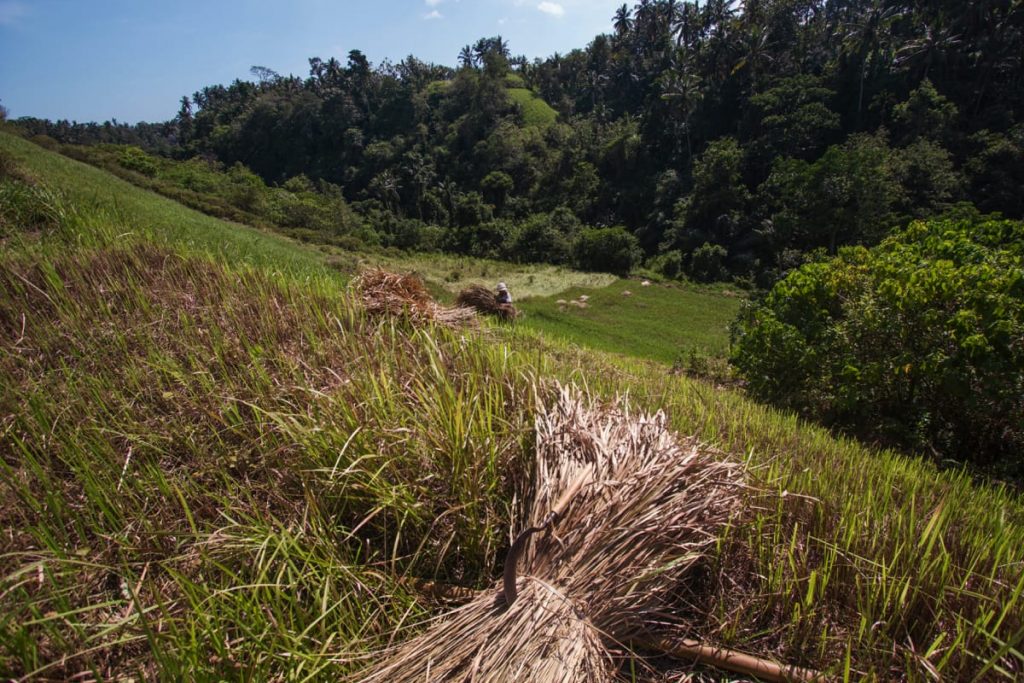
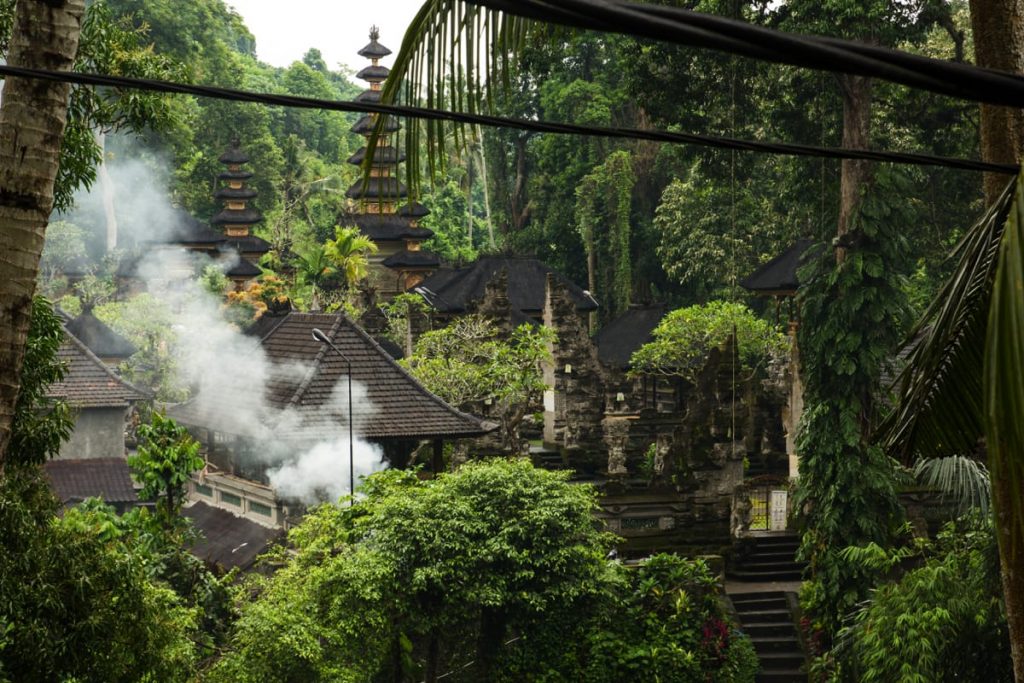
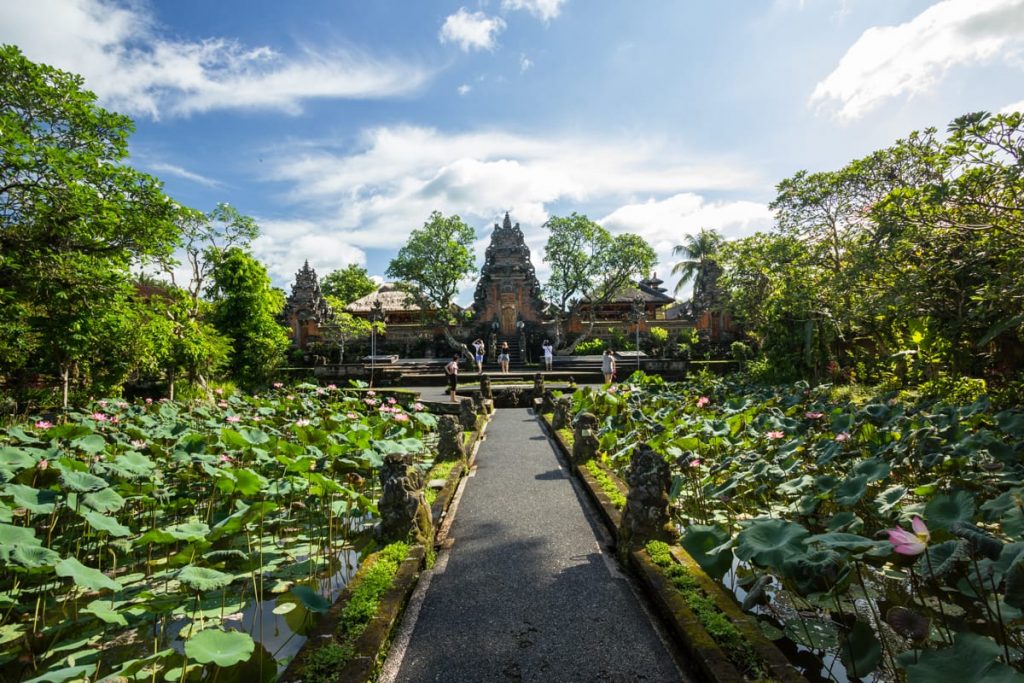
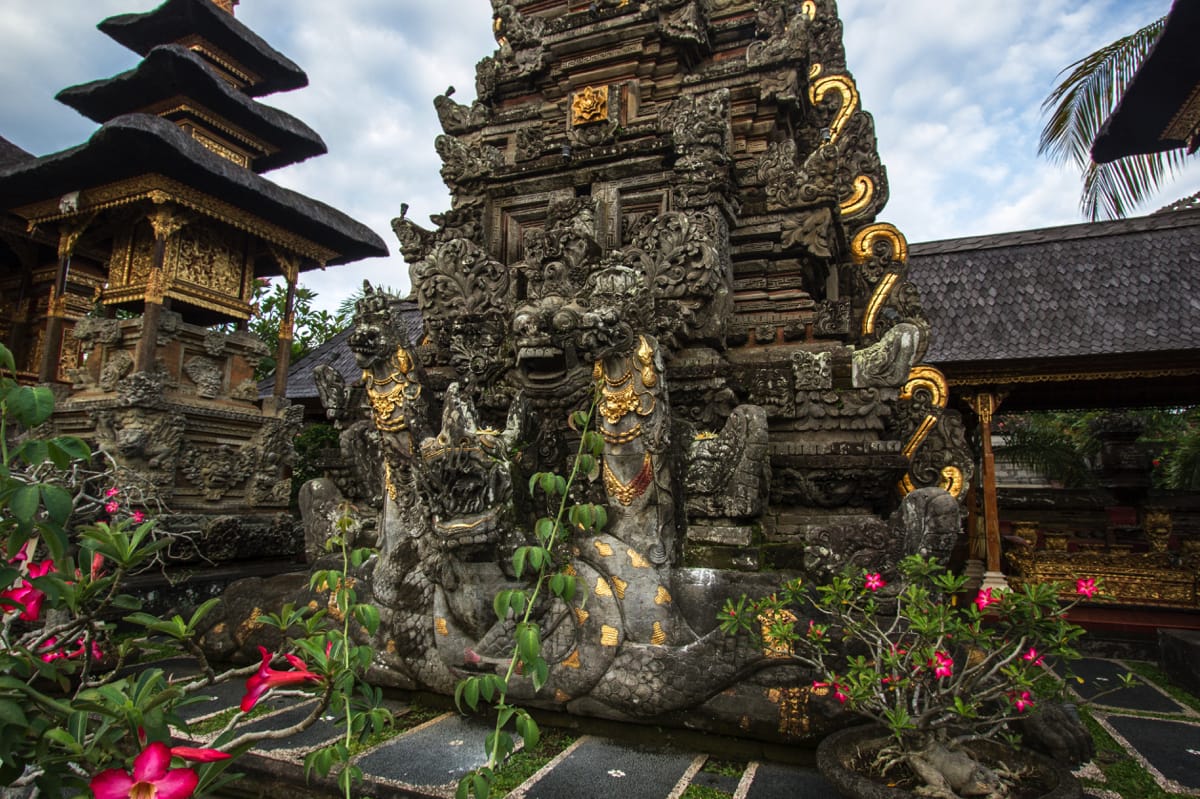
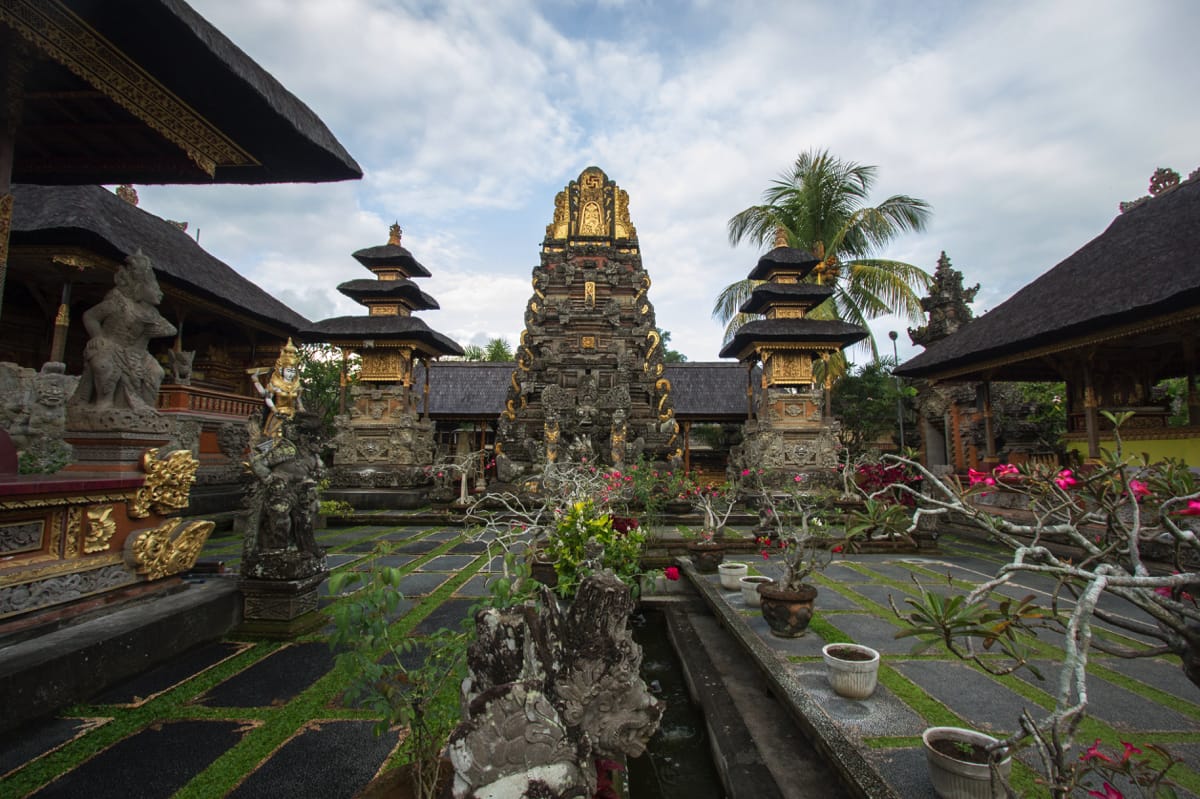
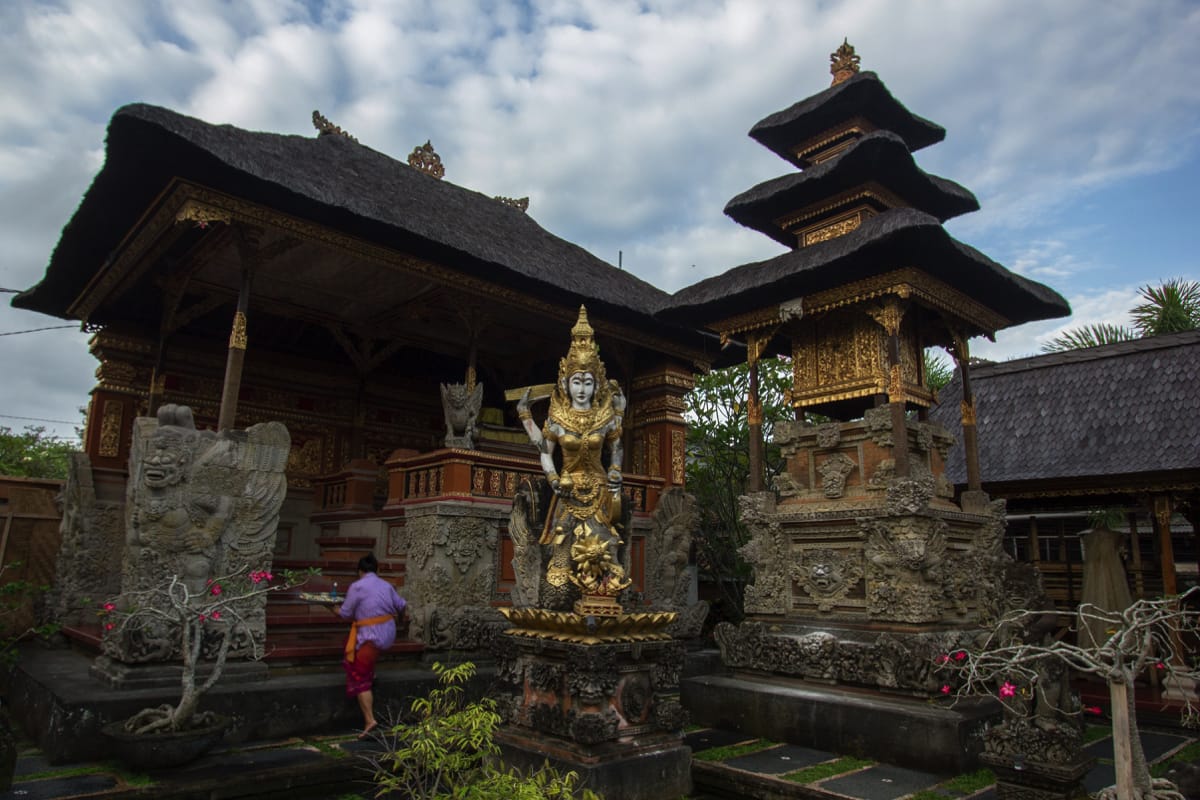
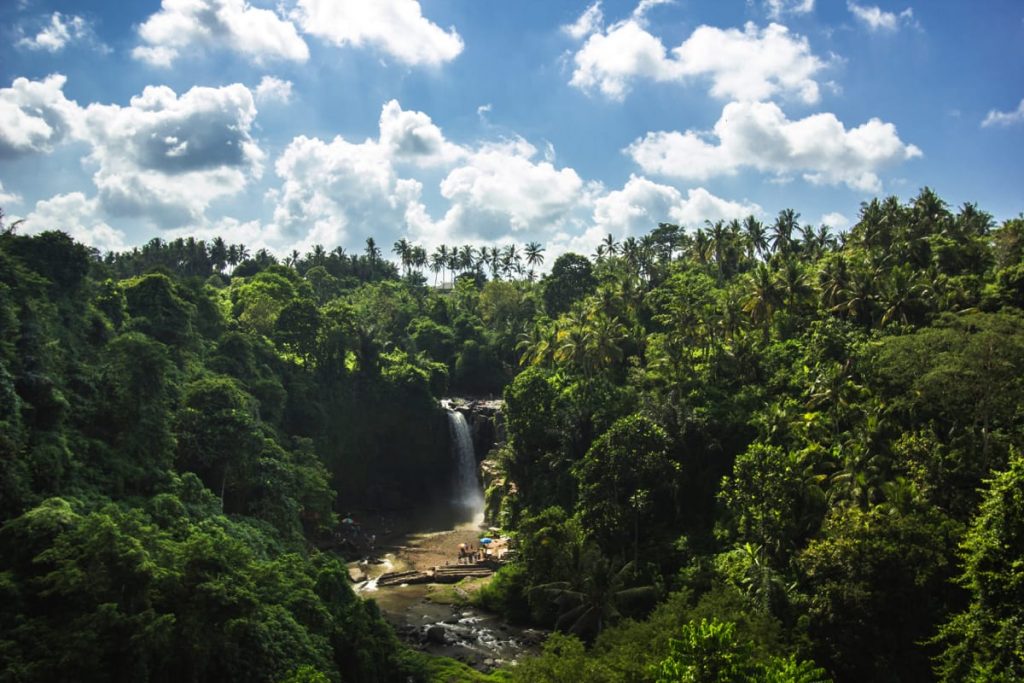
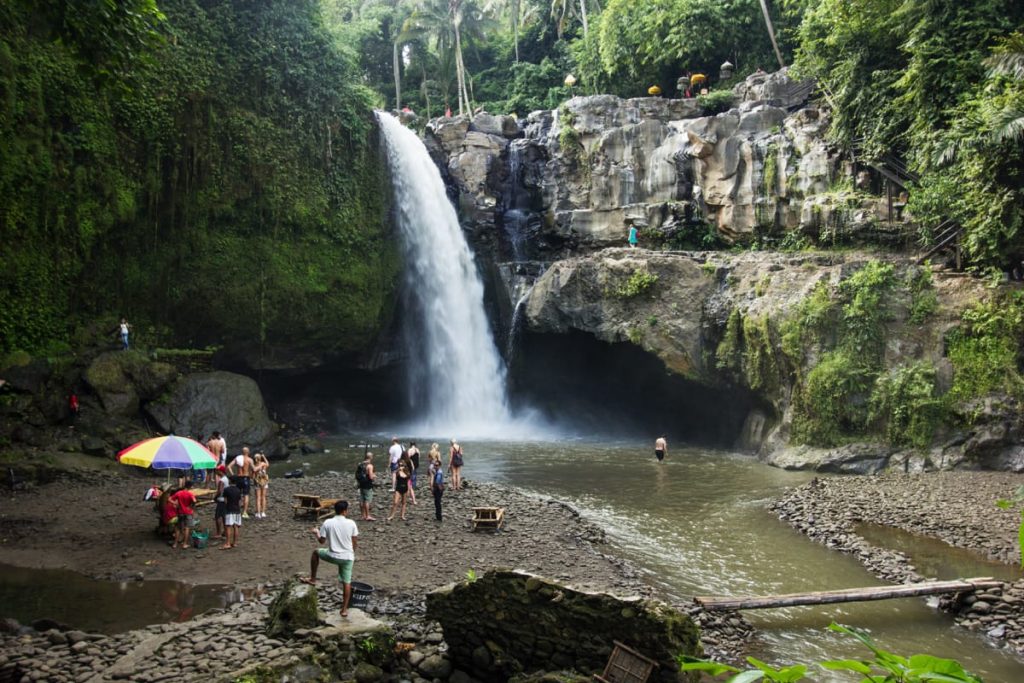
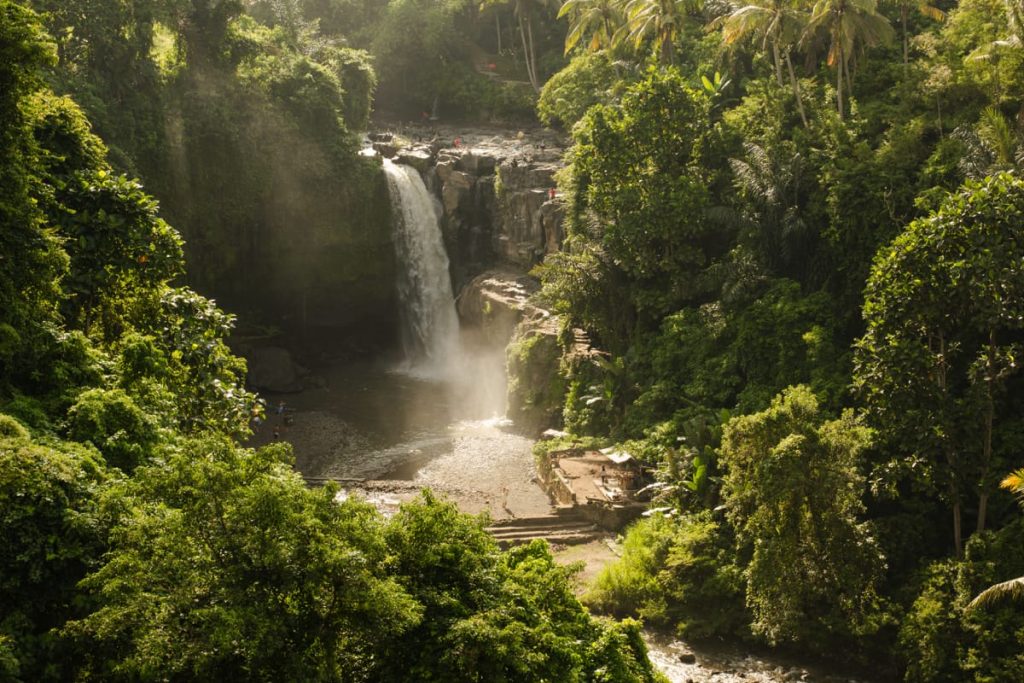
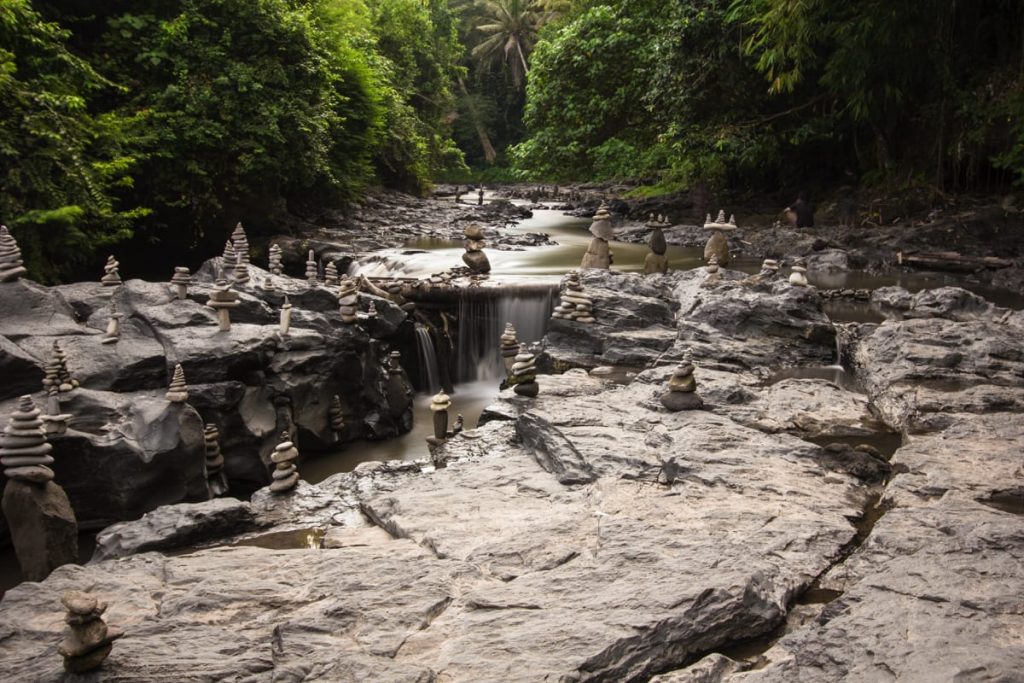
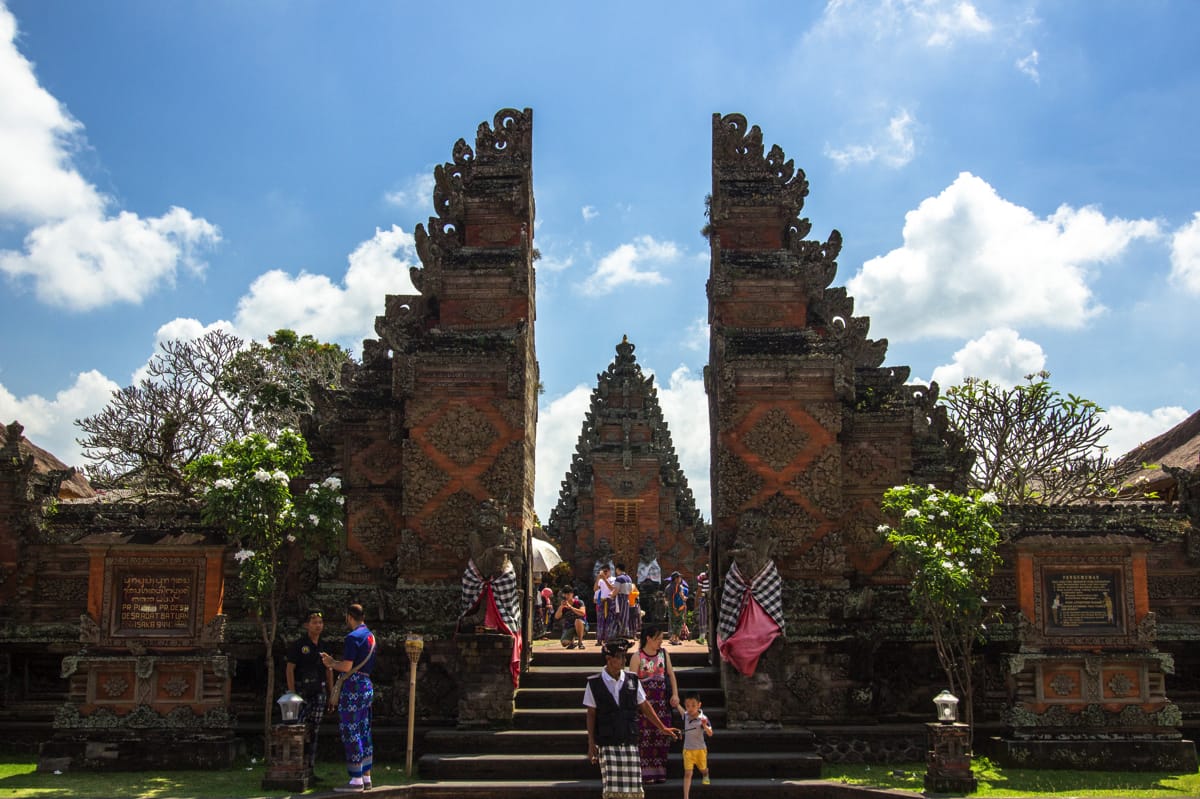


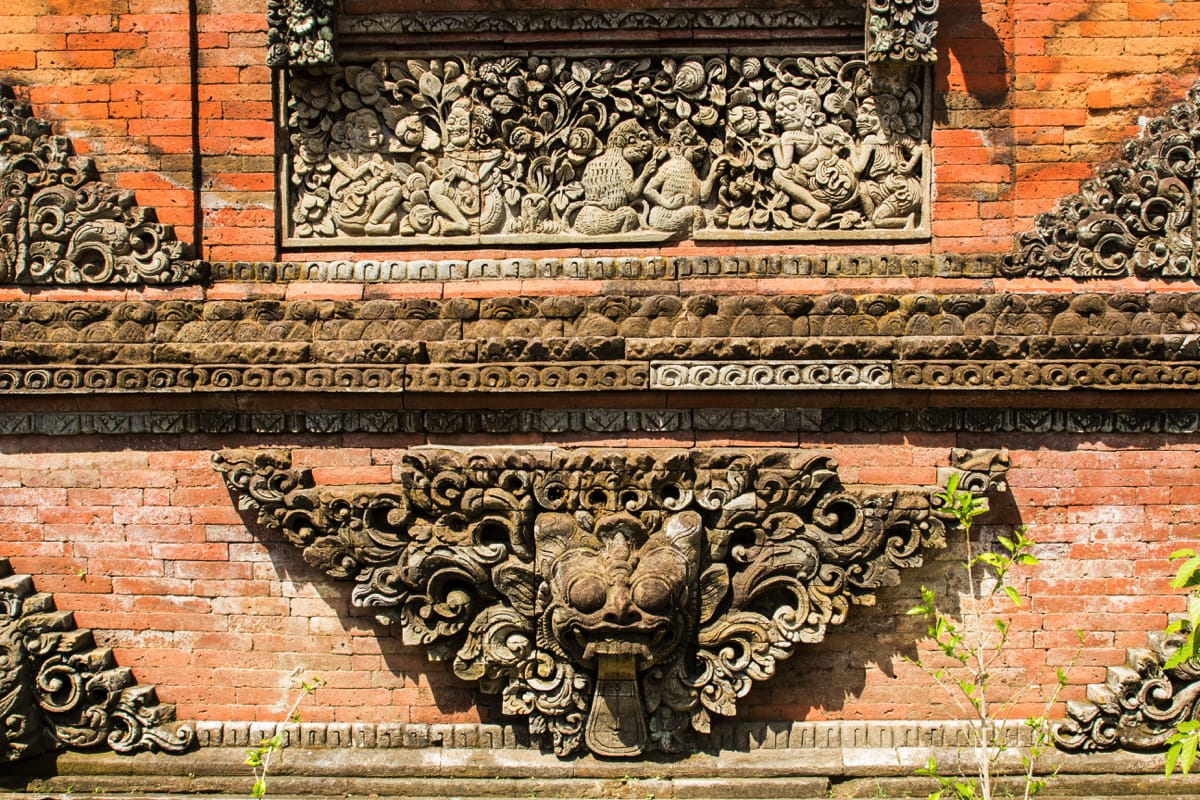

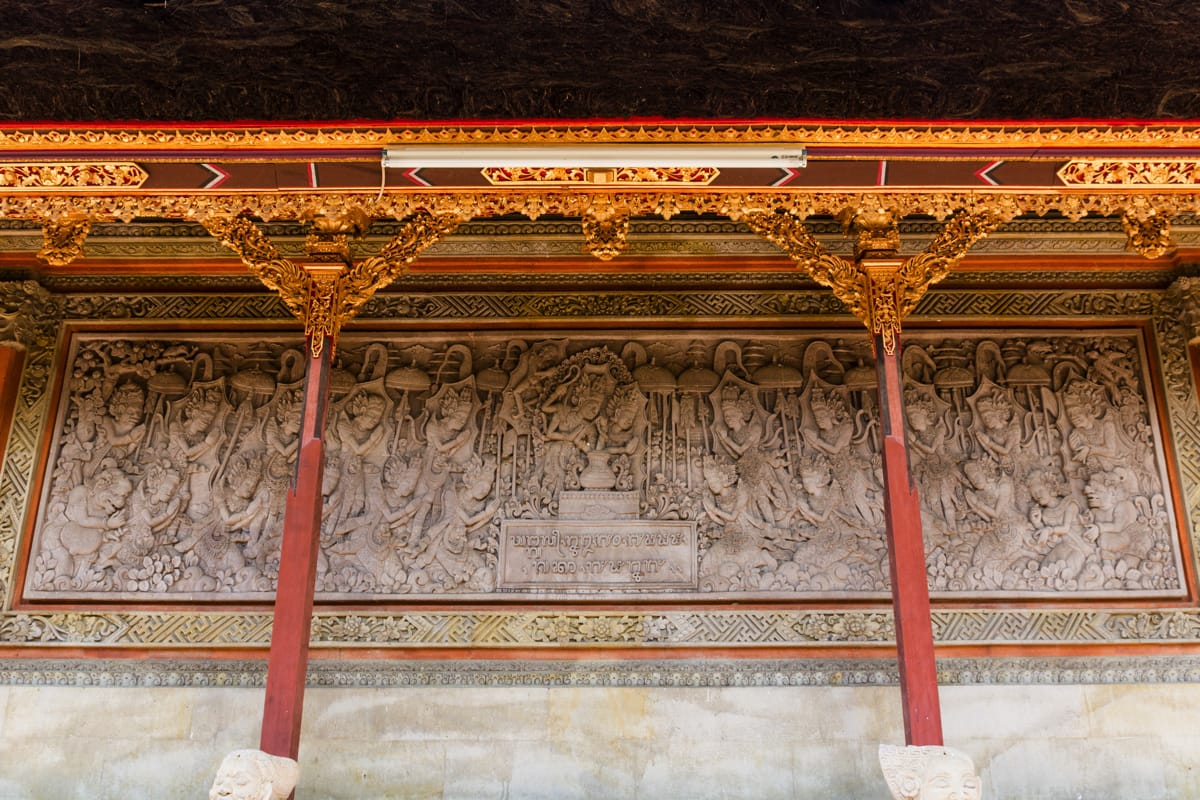
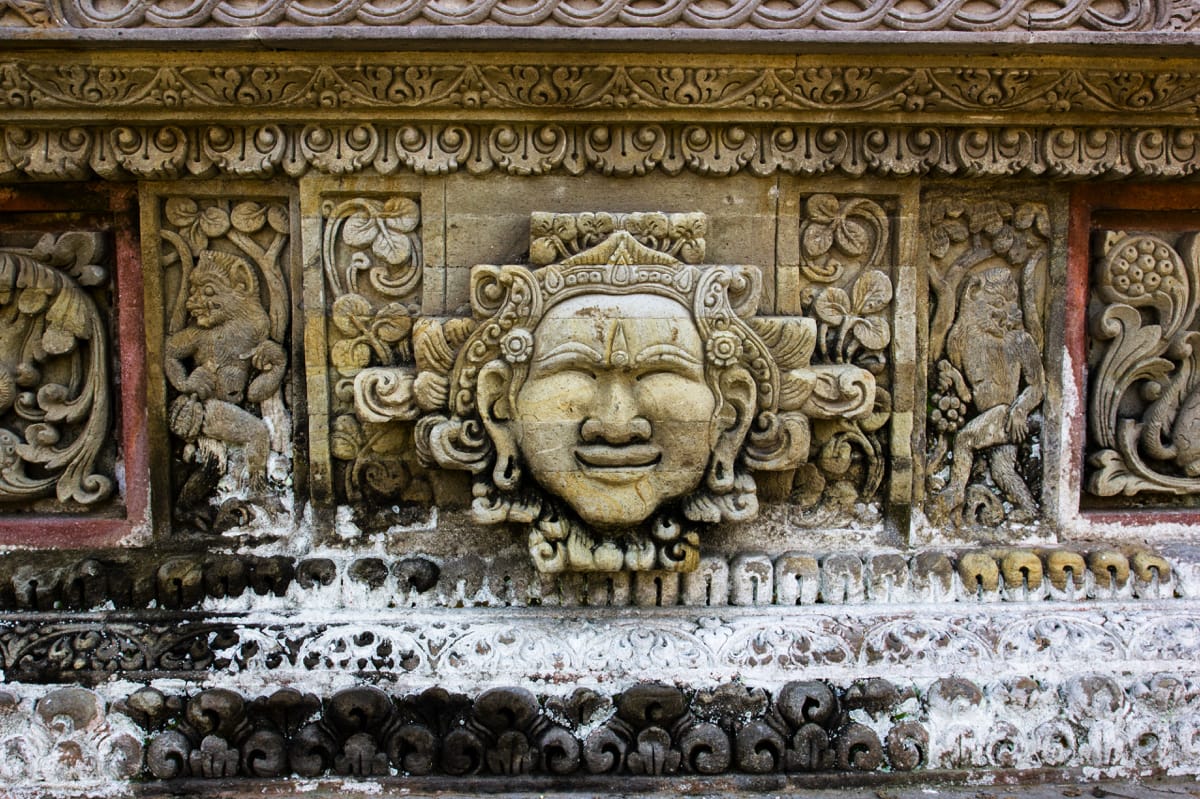
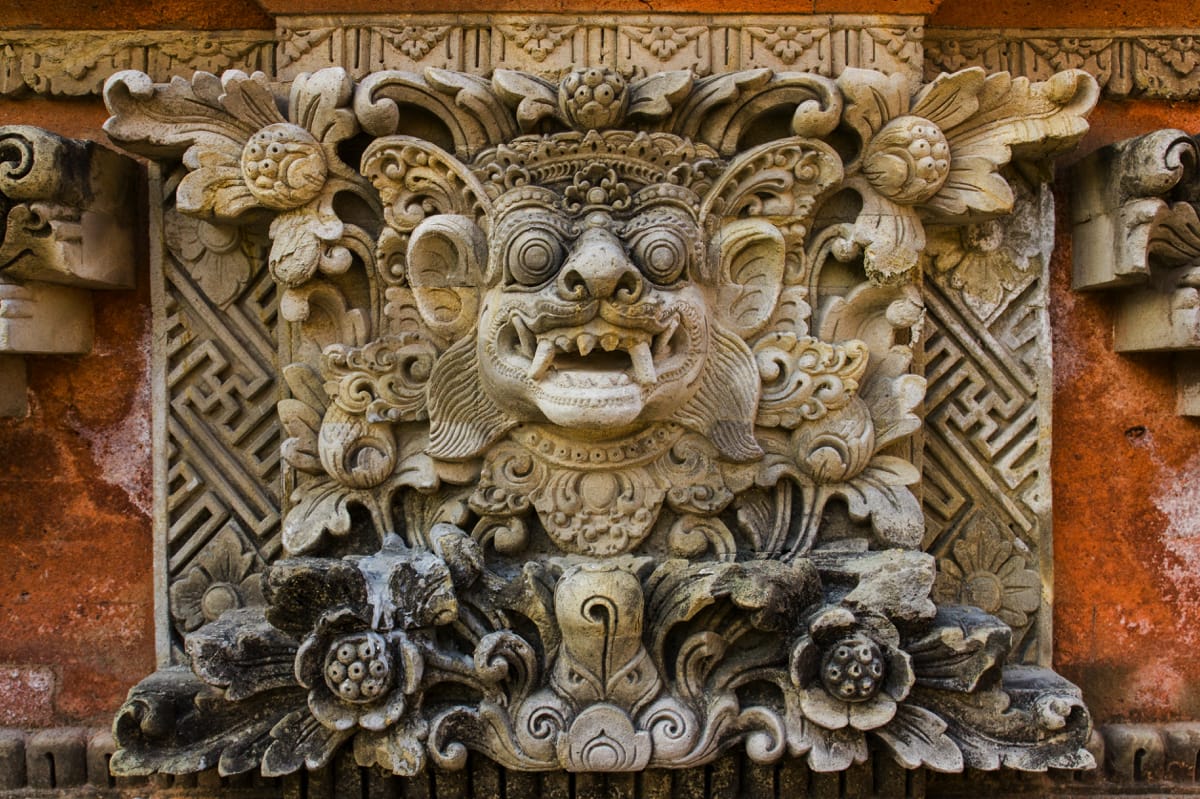
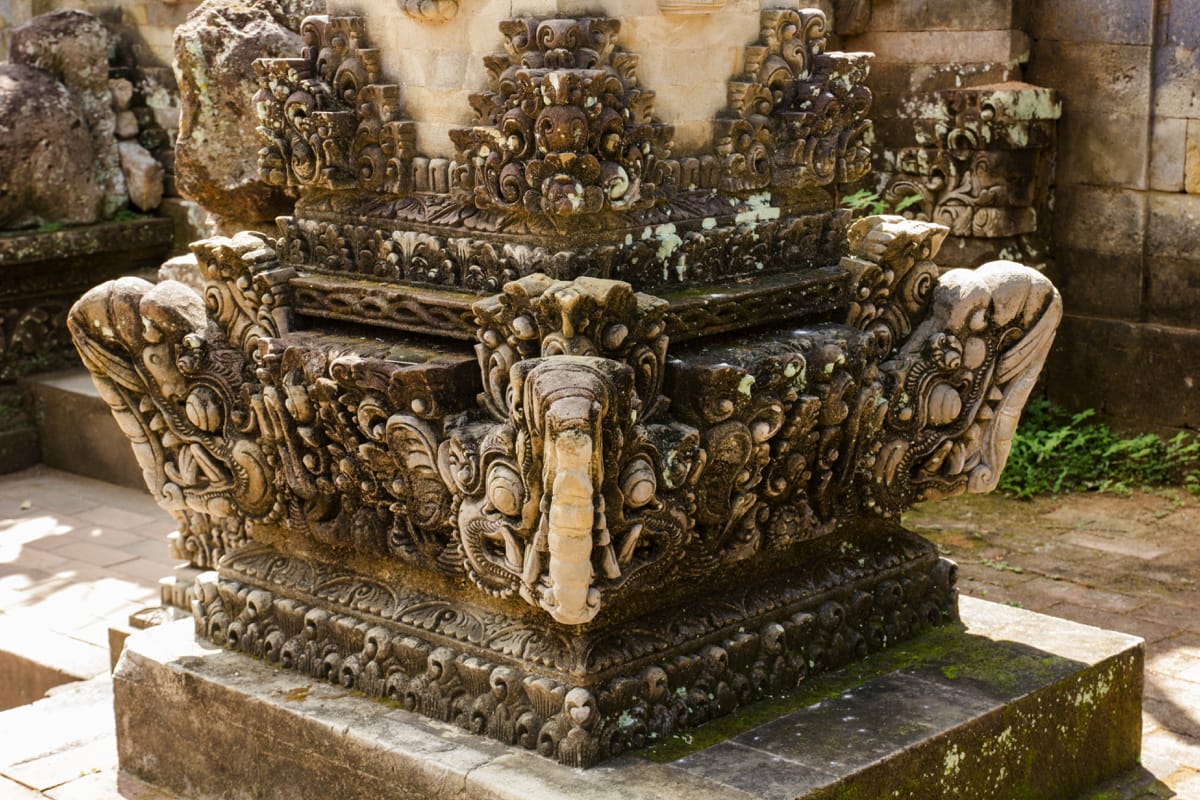
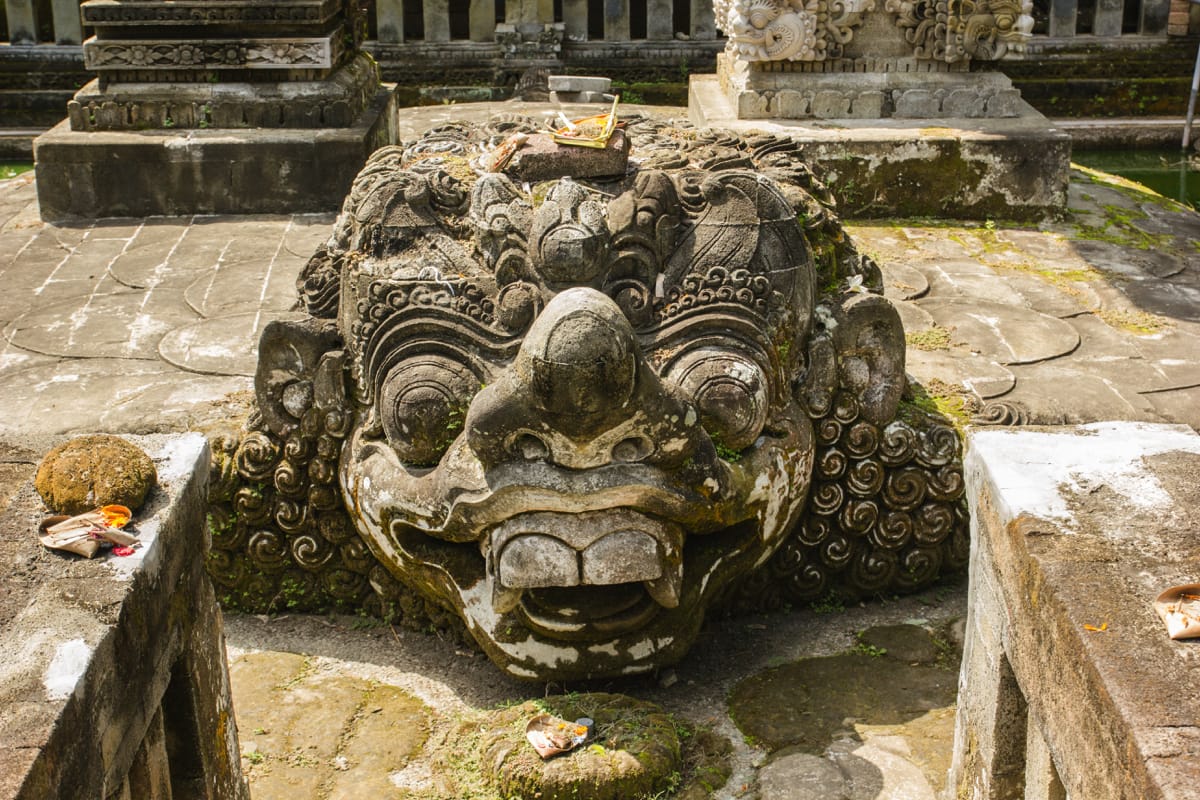
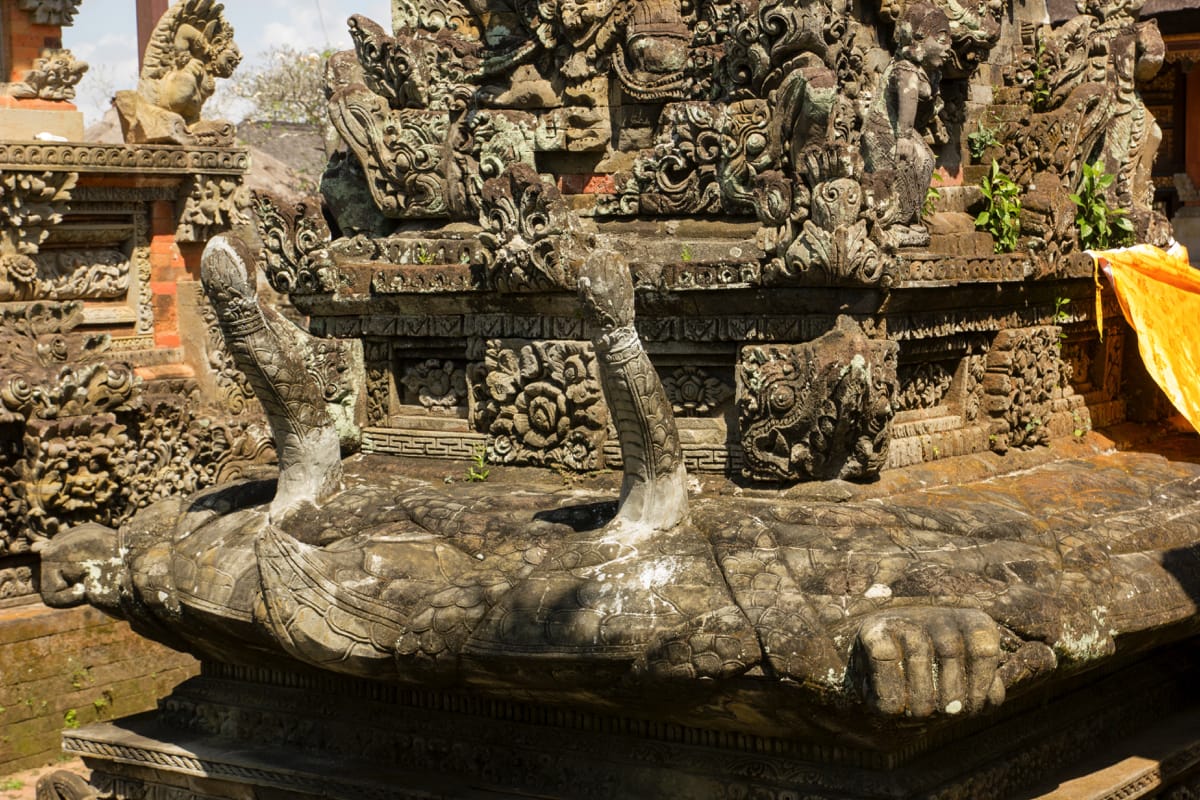
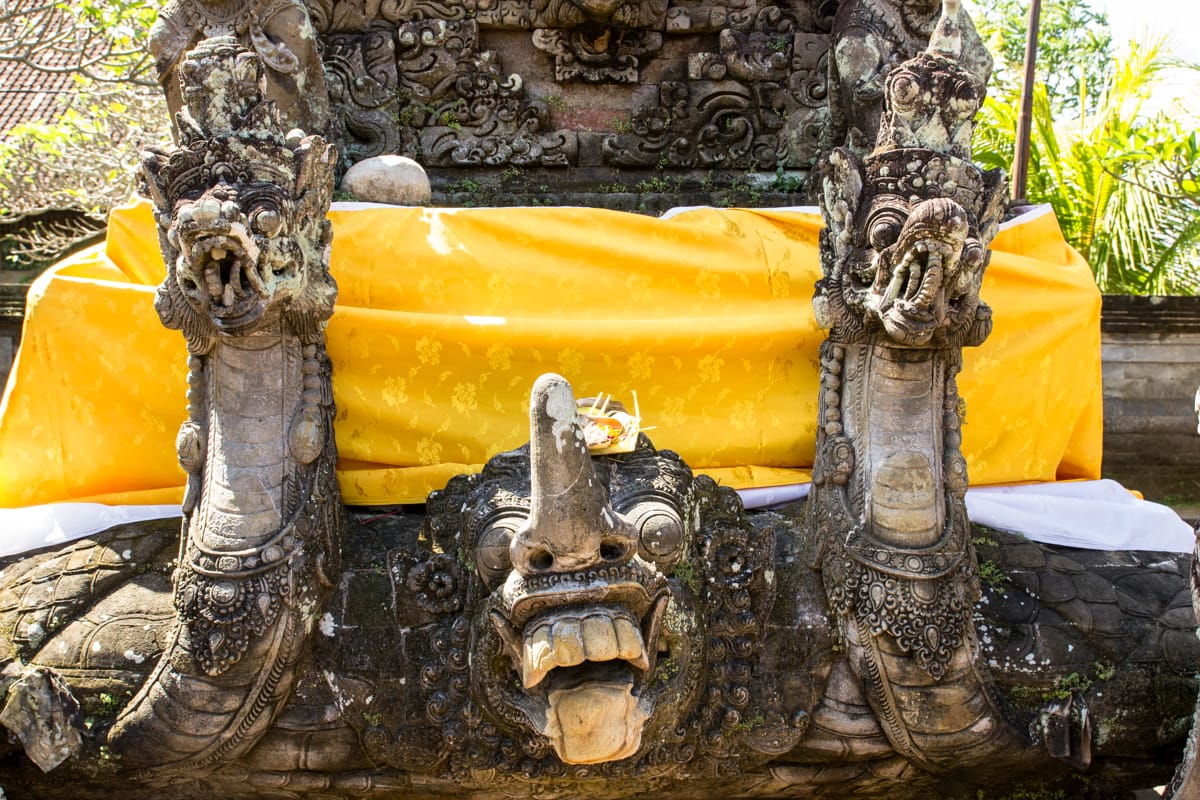
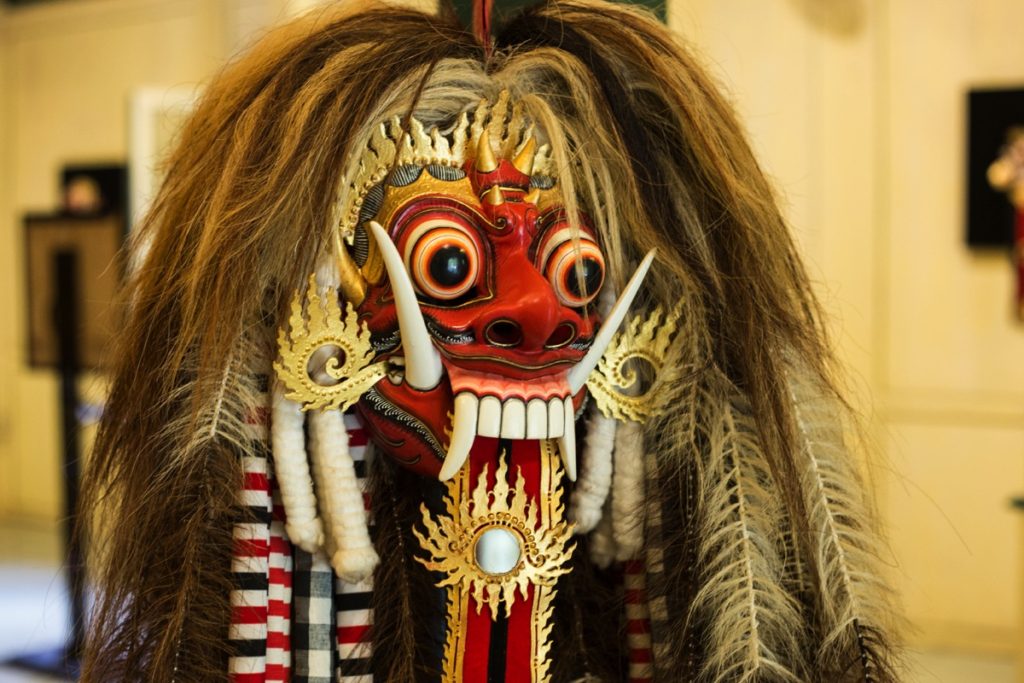
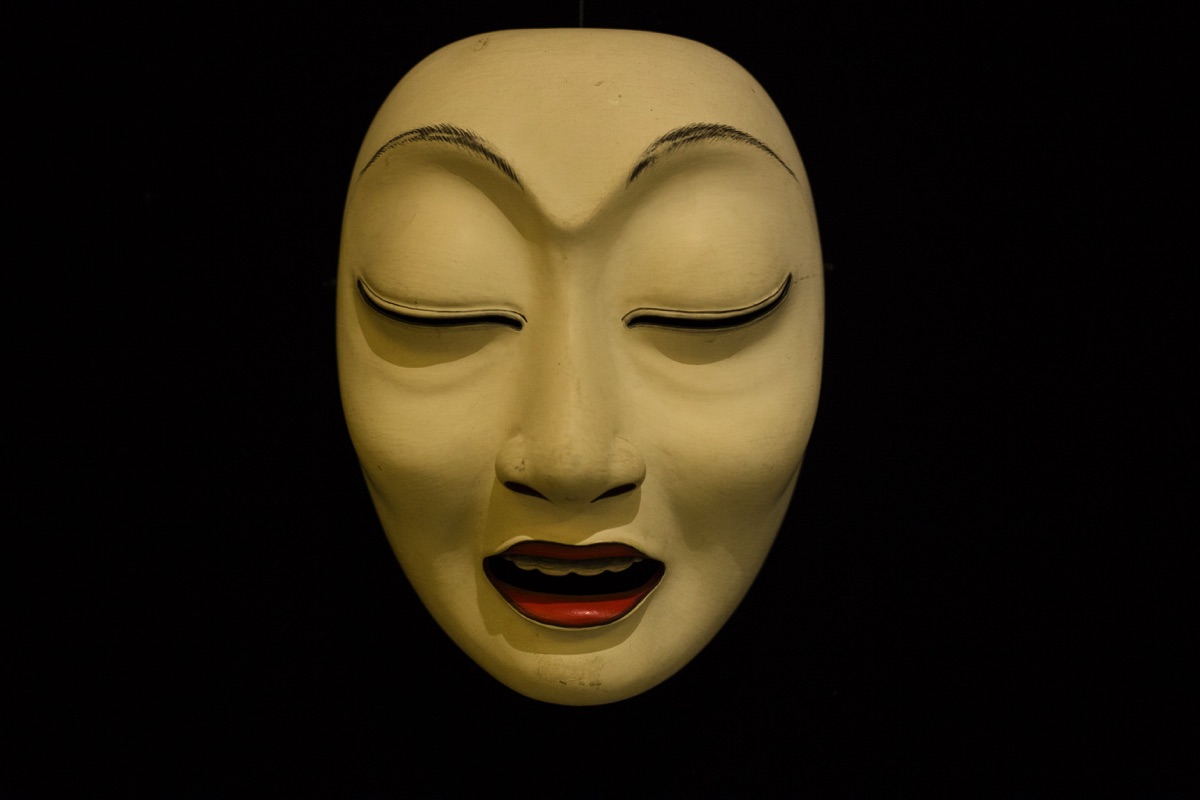
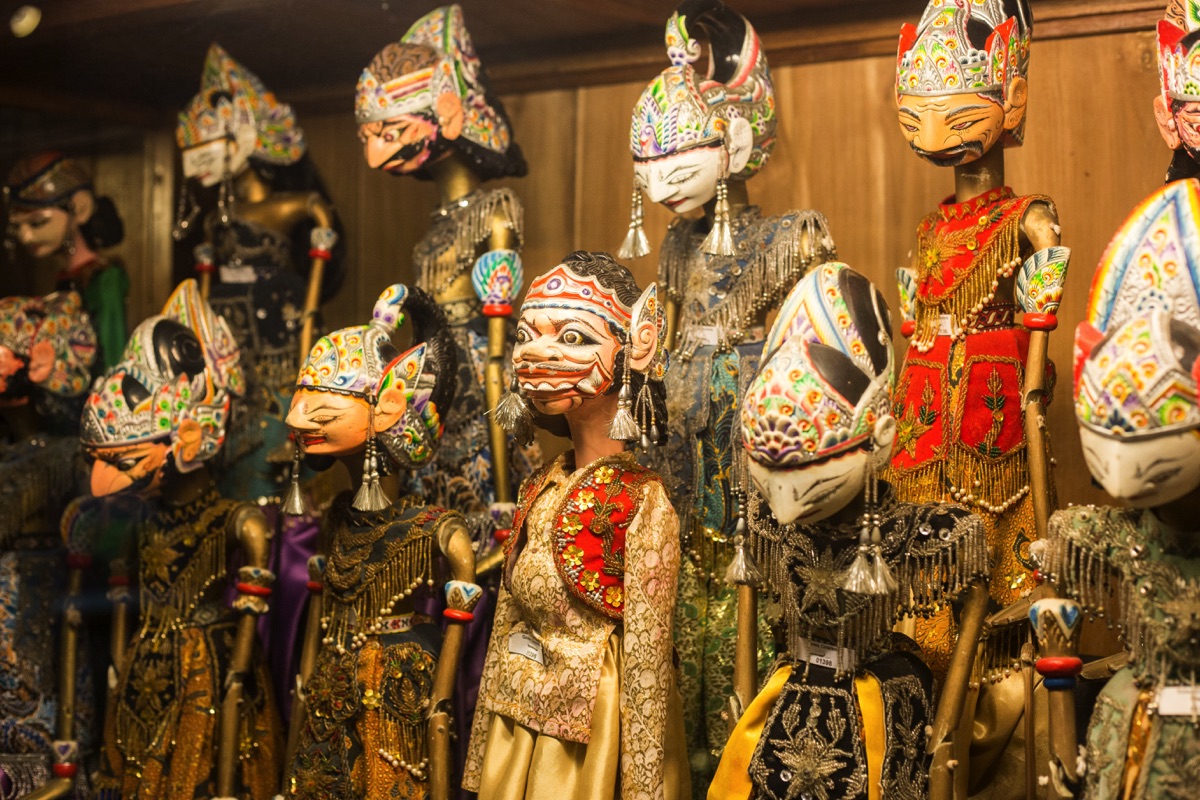
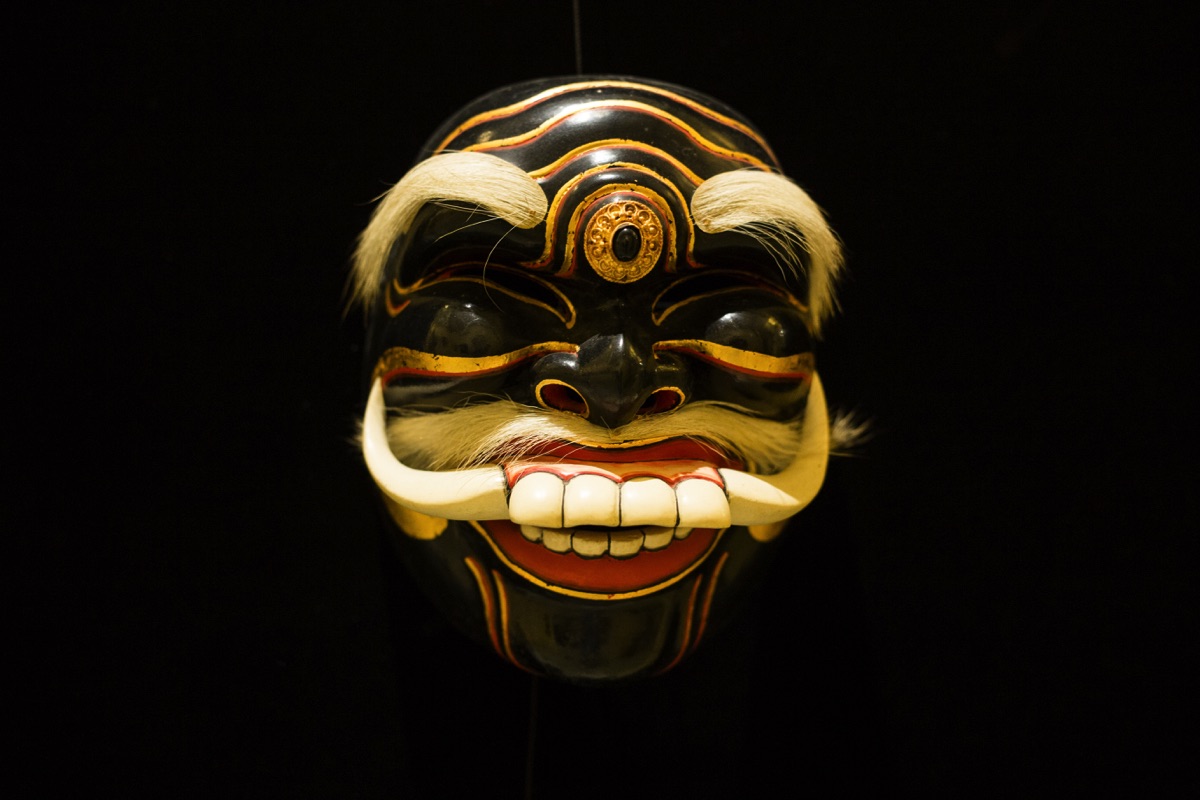
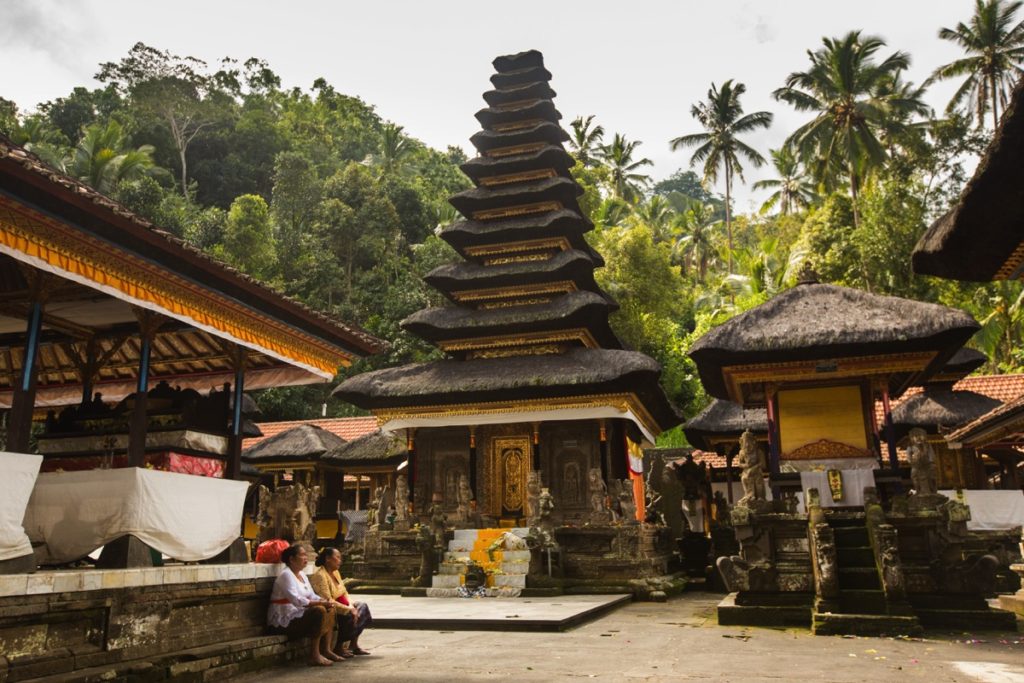
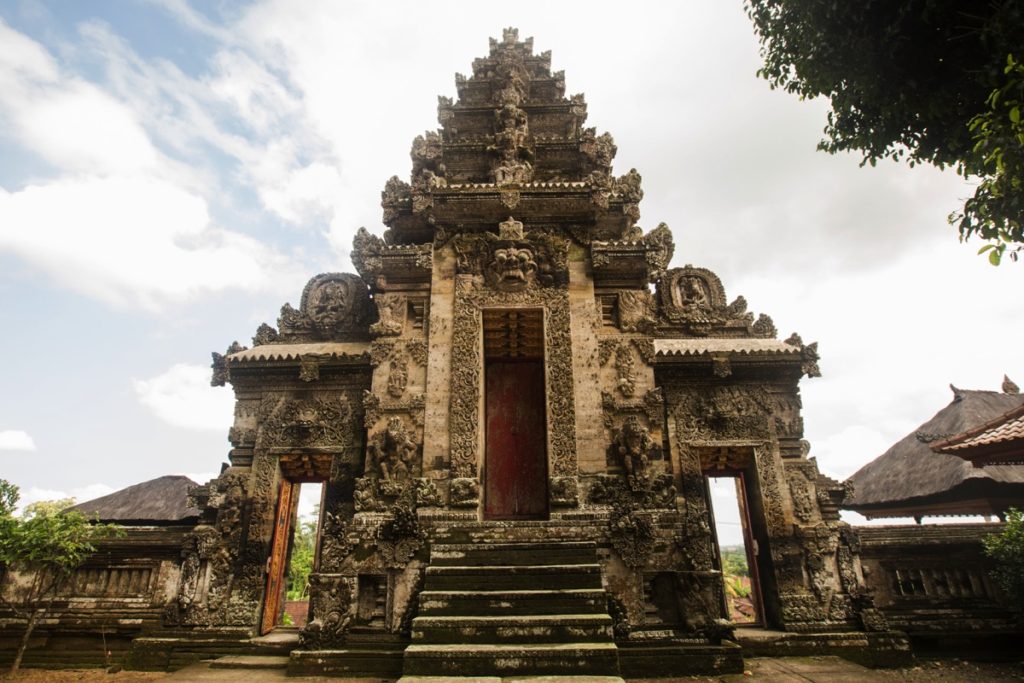
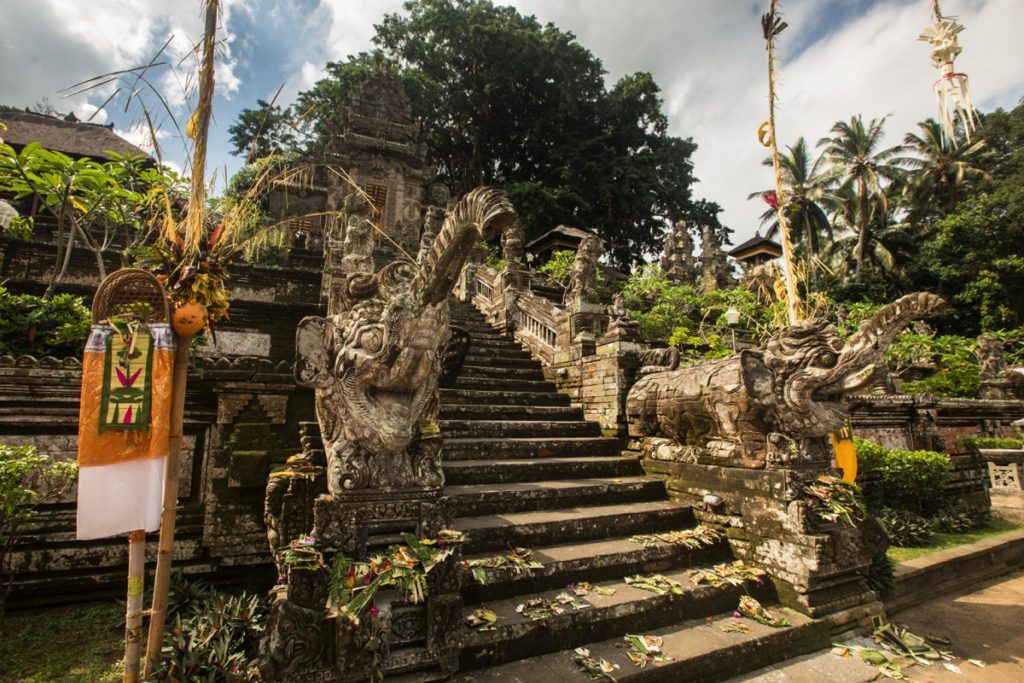
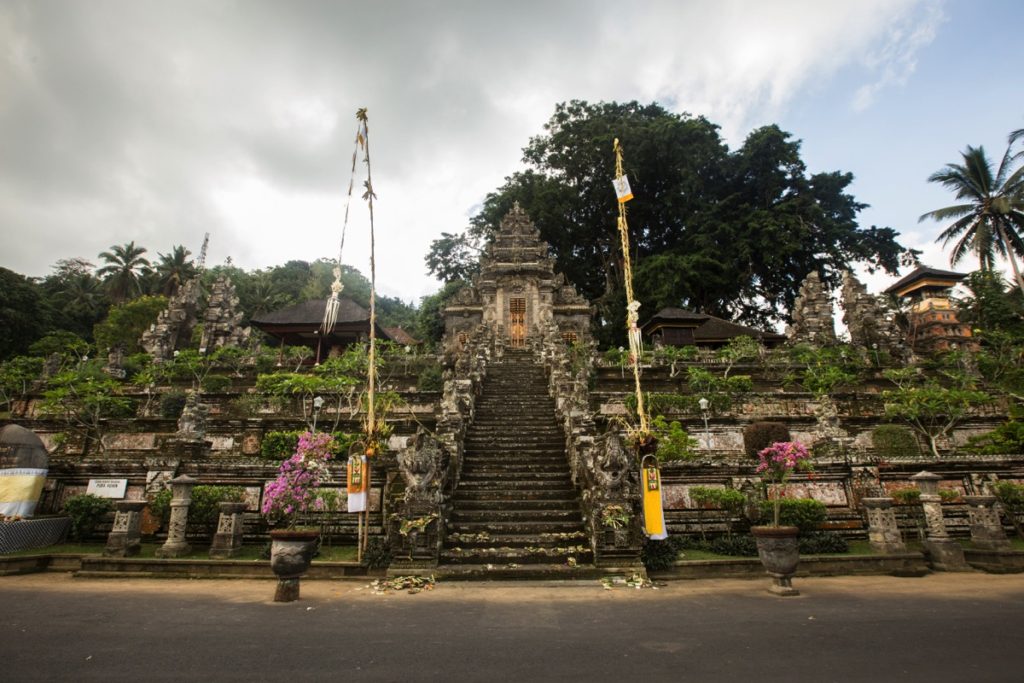
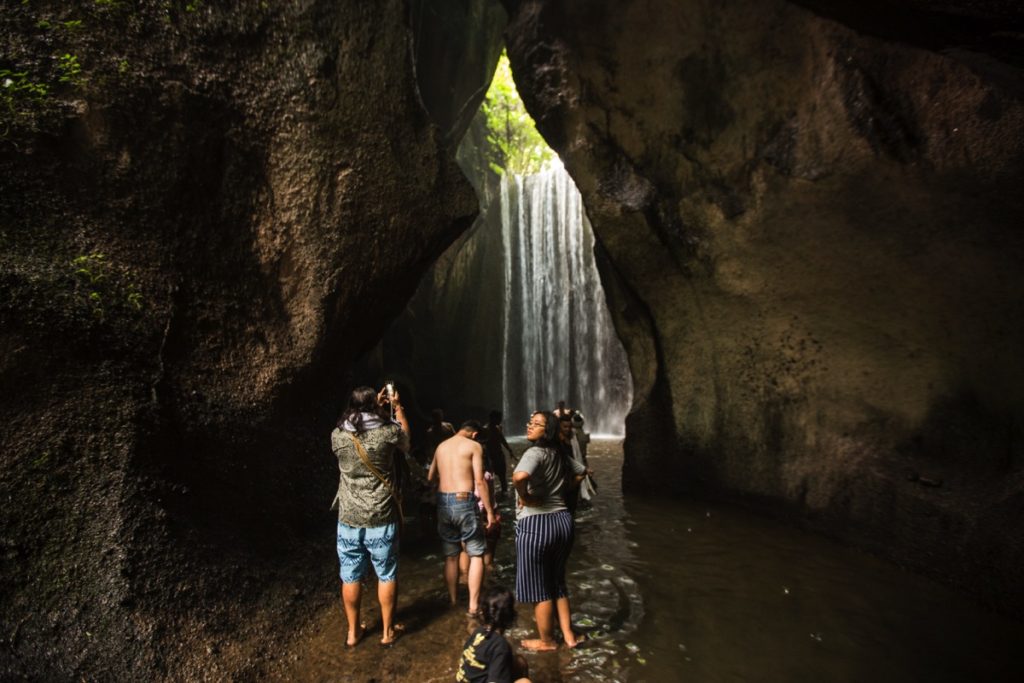
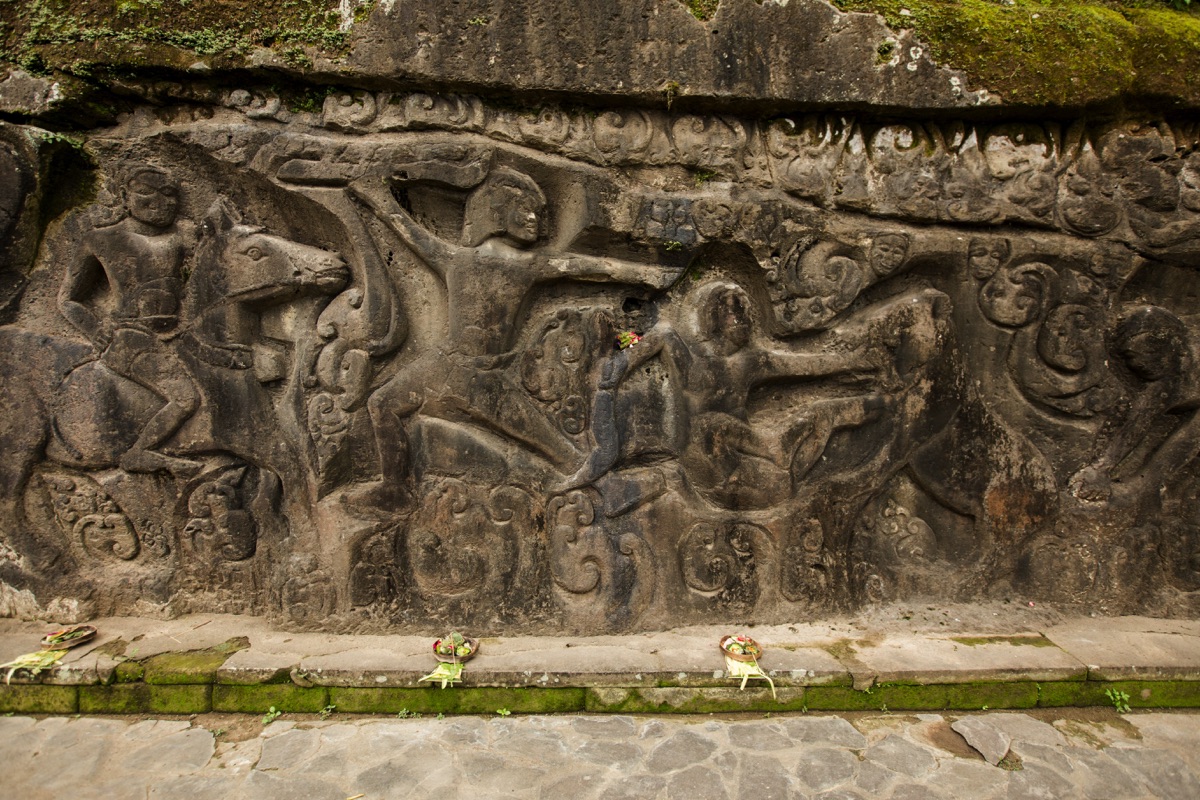
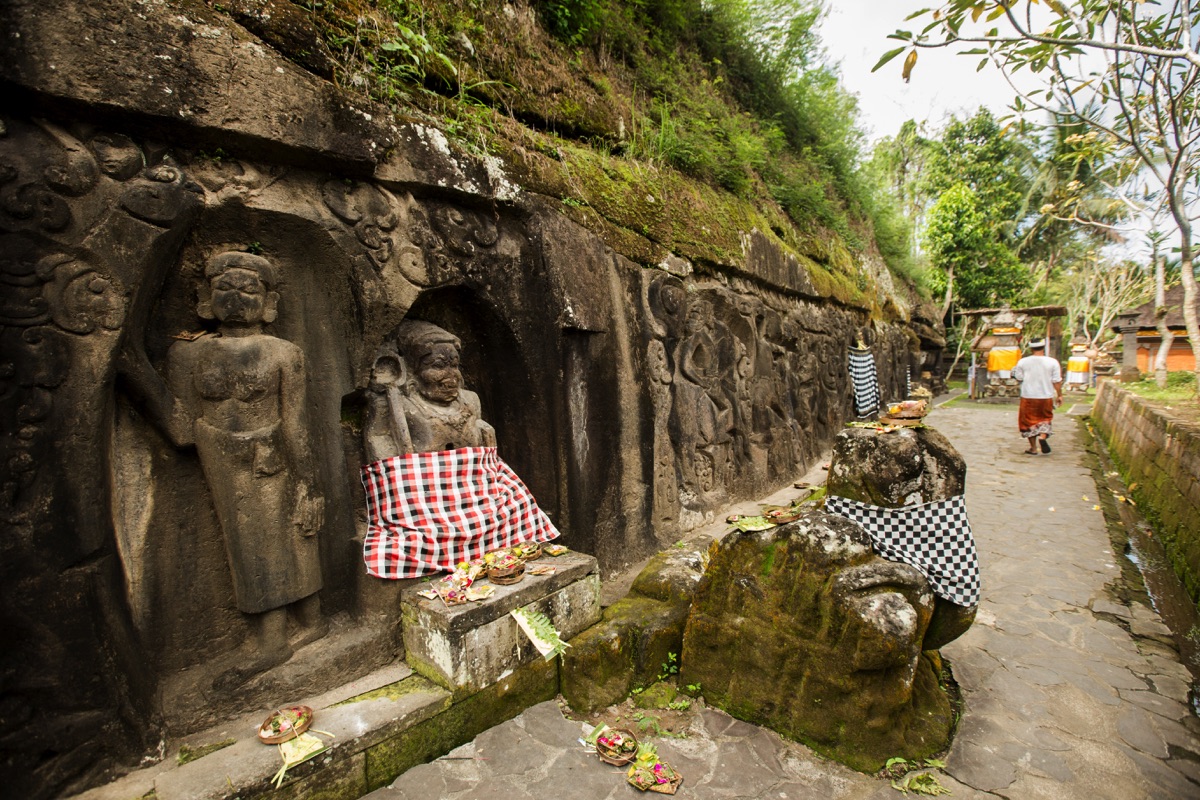
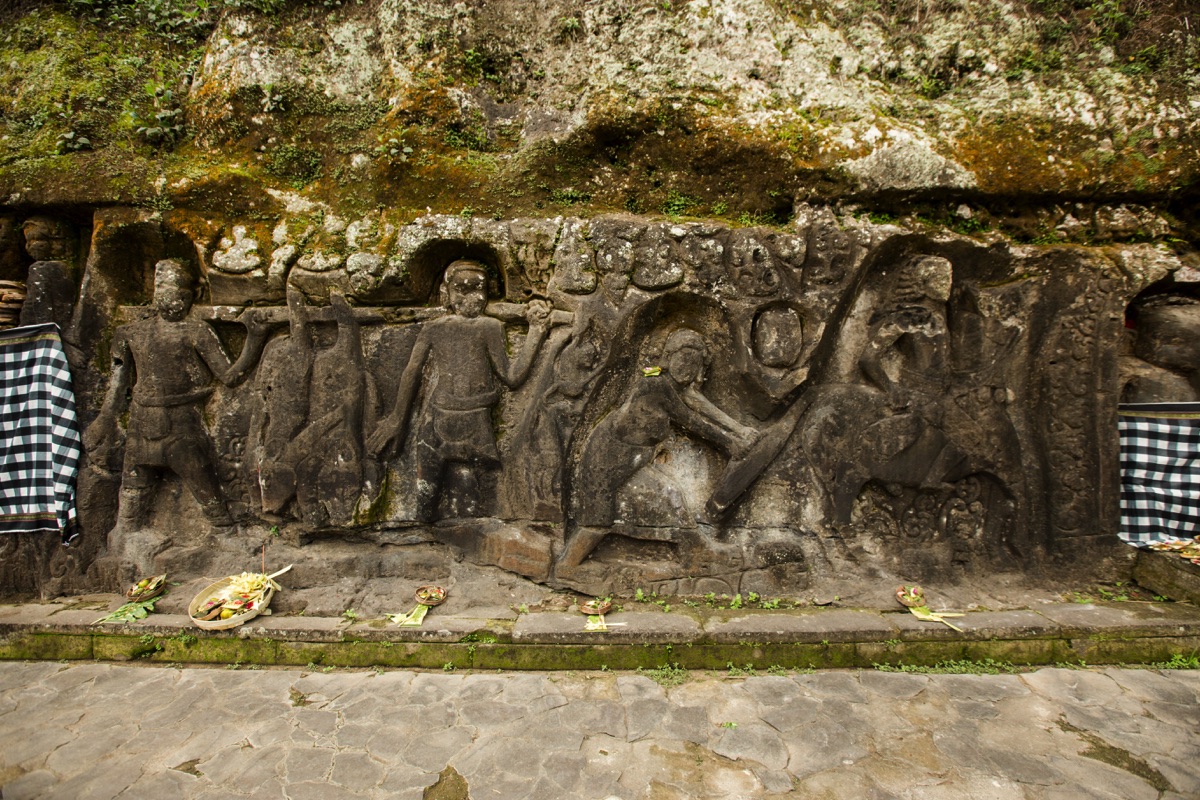
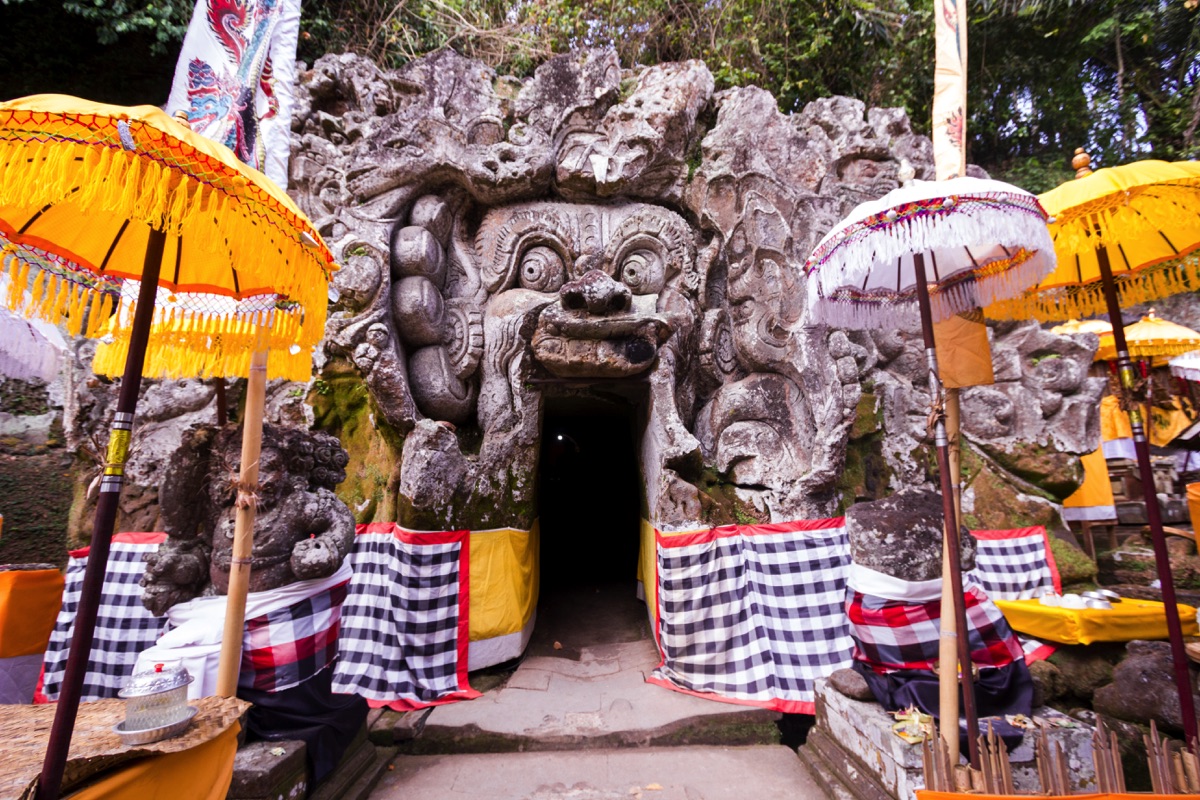
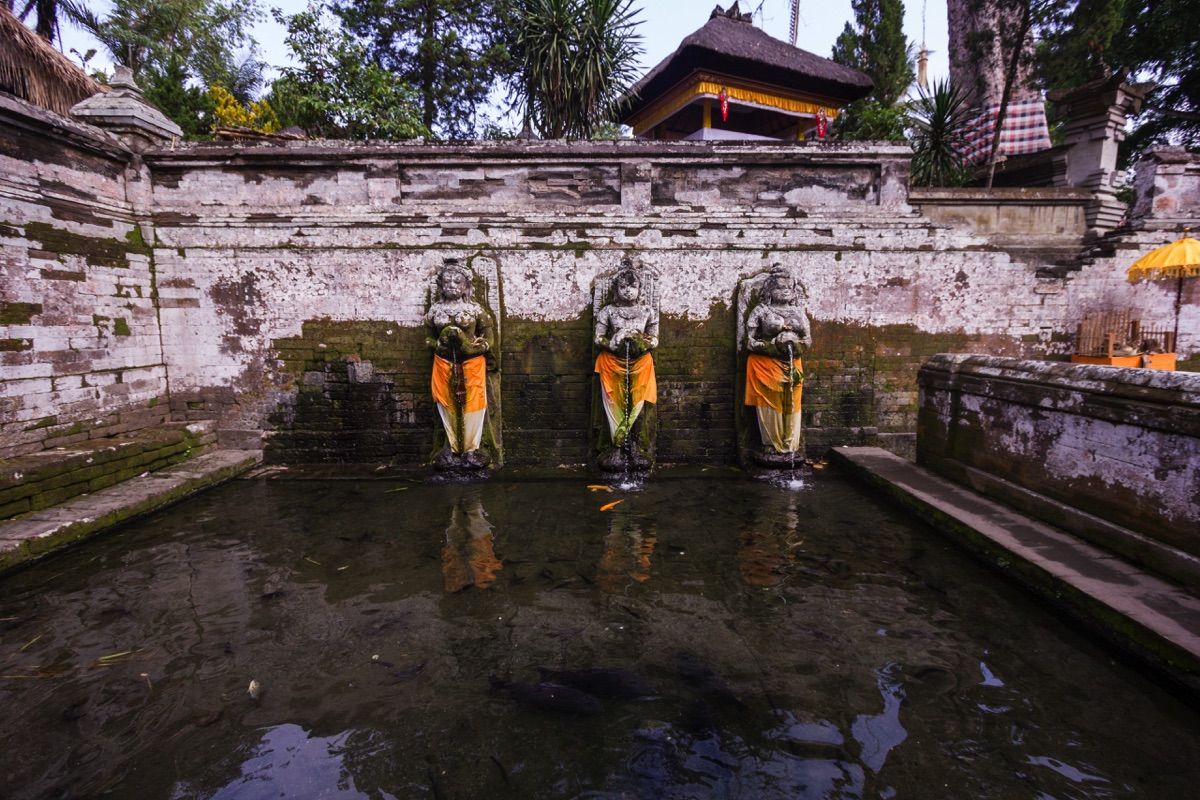
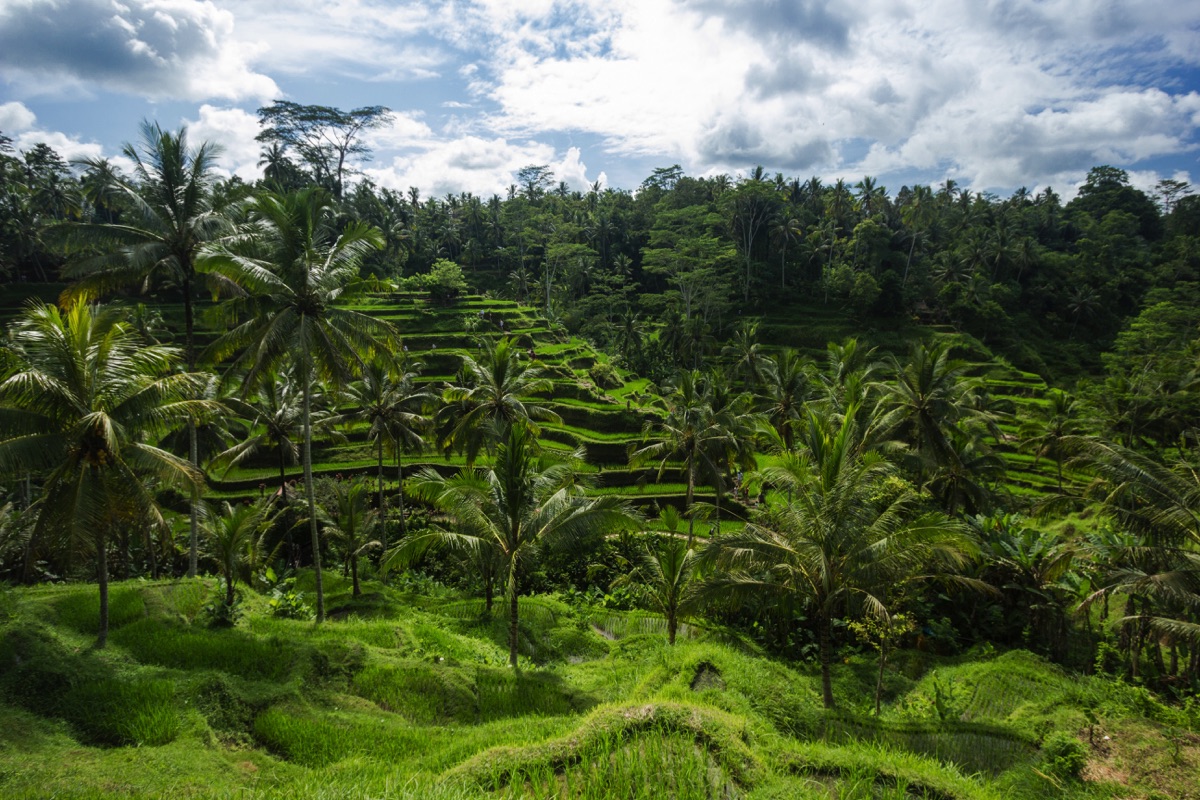
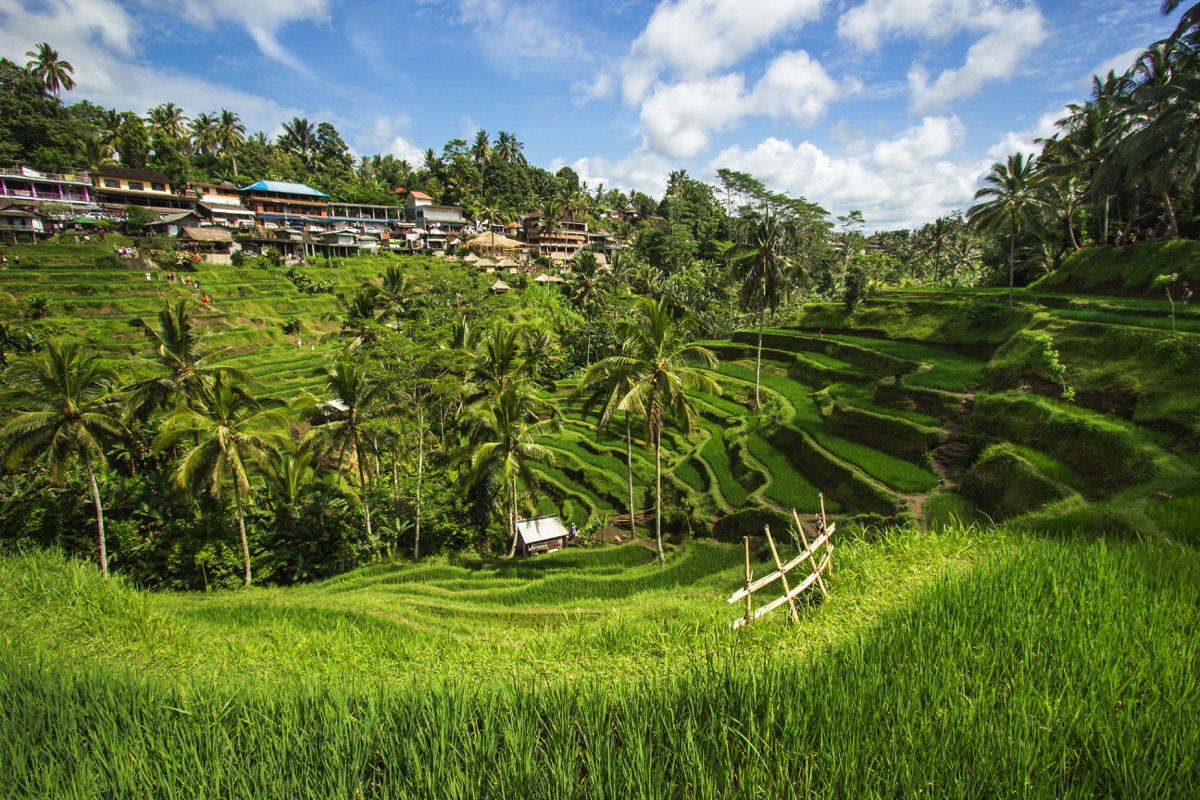
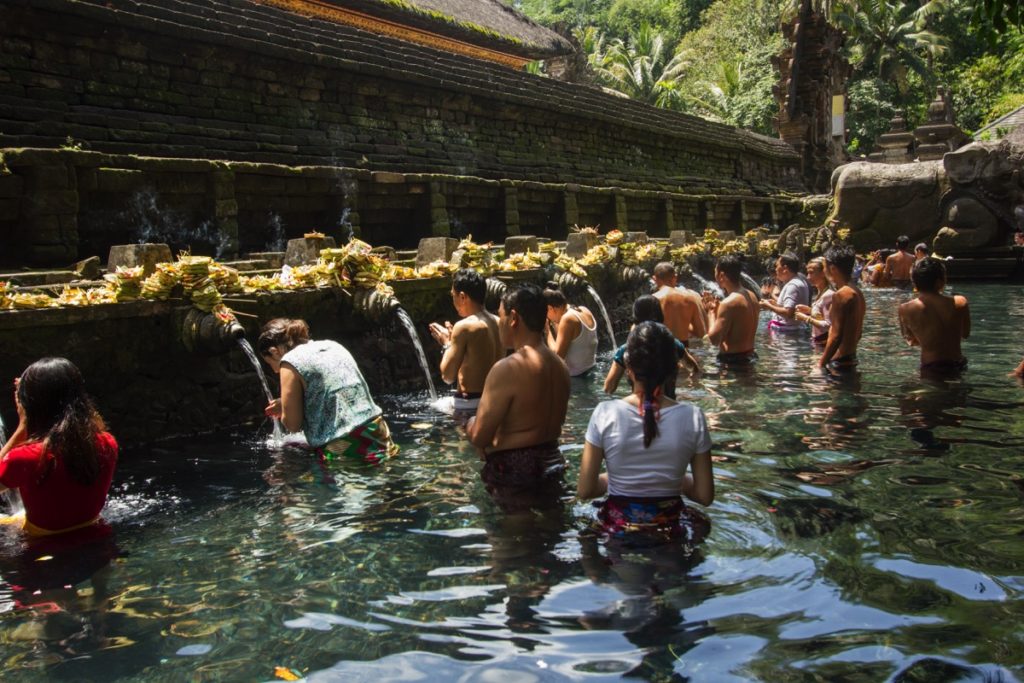

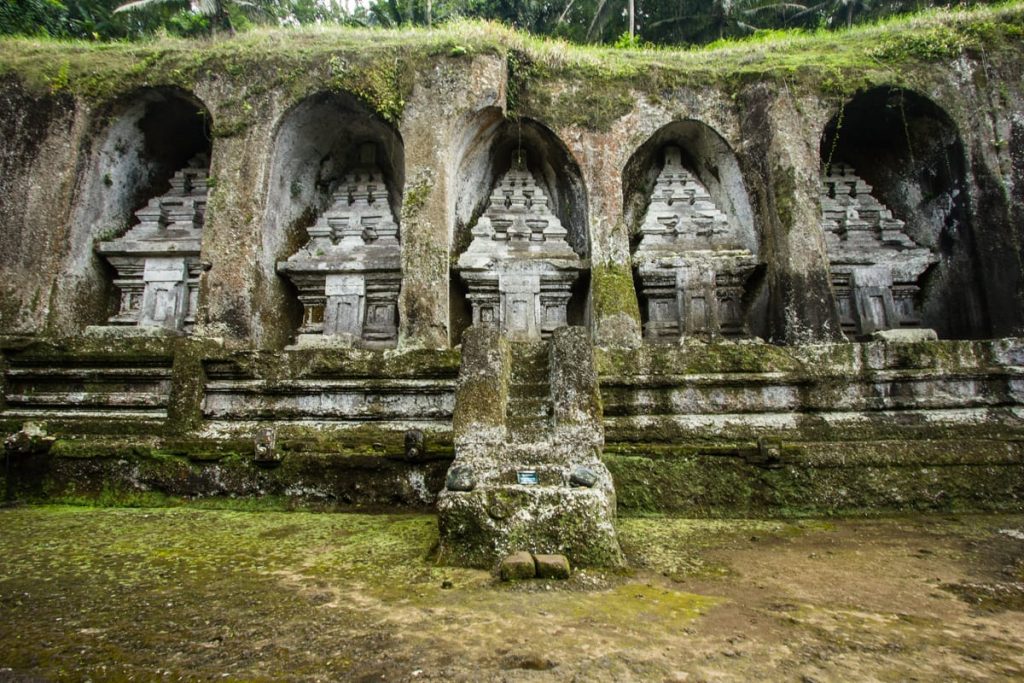
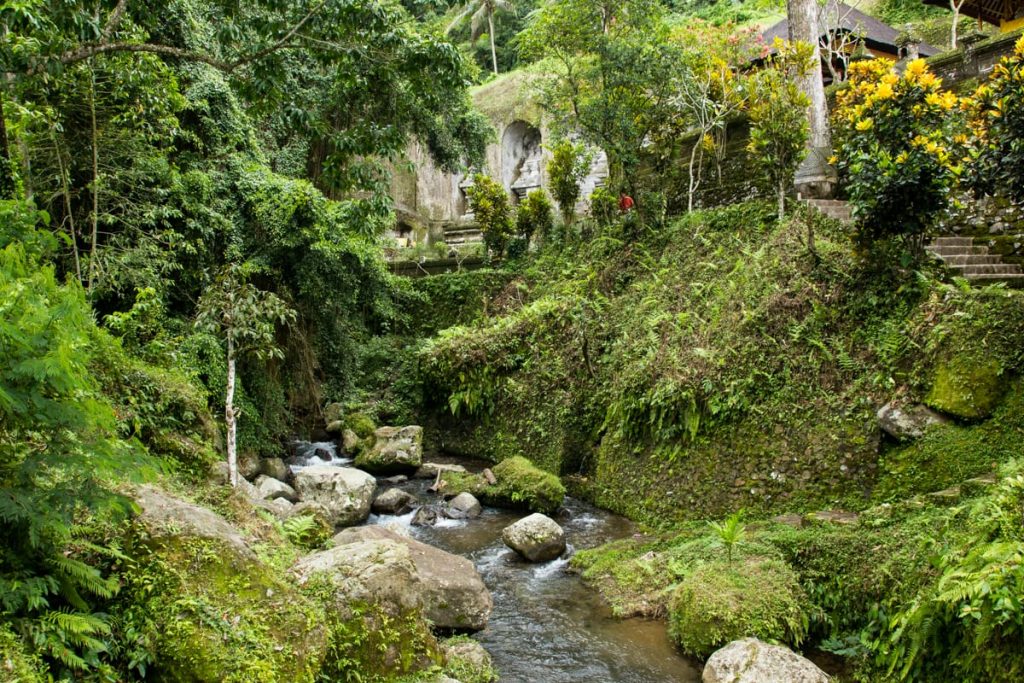
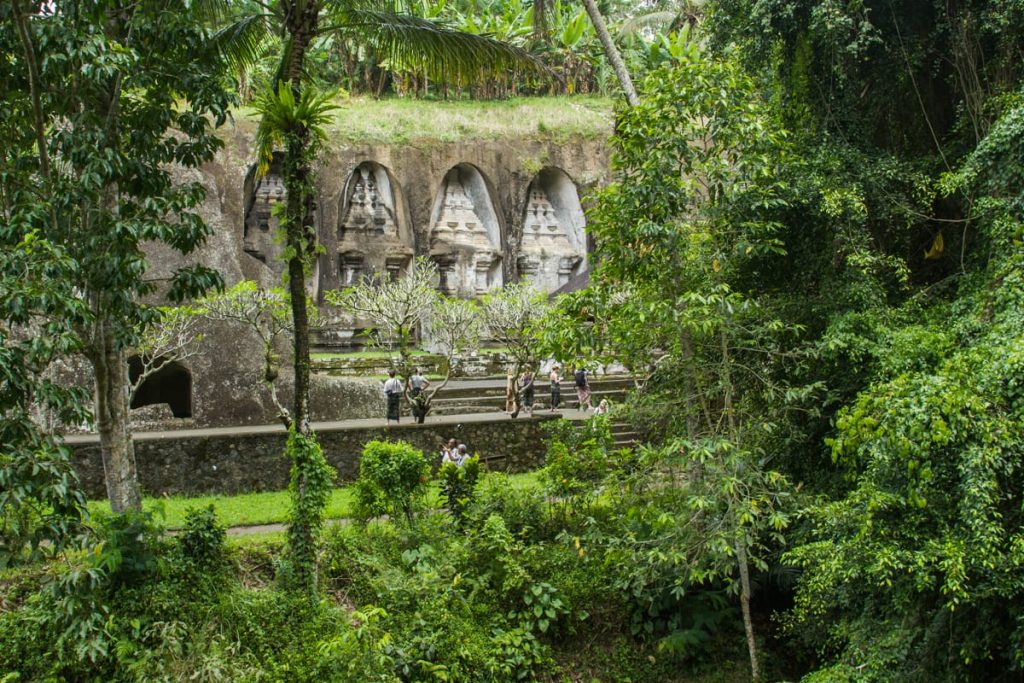
Great information, thanks. I recently stayed several weeks in Ubud, mainly due to the incredibly good vegetarian eating options. Nothing else like it in Indonesia outside major cities! One little quibble: Surgiwa street is not at all quiet! It’s a normal narrow street constantly terrorized by noisy dirty scooters just like any other in Indonesia. There are only two streets in Ubud that look like pedestrian zones, namely the Gootama tourist street, and Jembawan, which is next to Surgiwa. In those there are no cars. But the scooters are literally everywhere, even in the tiniest alleyway and in the little tracks through the ricefields. Unfortunately there is no escape at all.